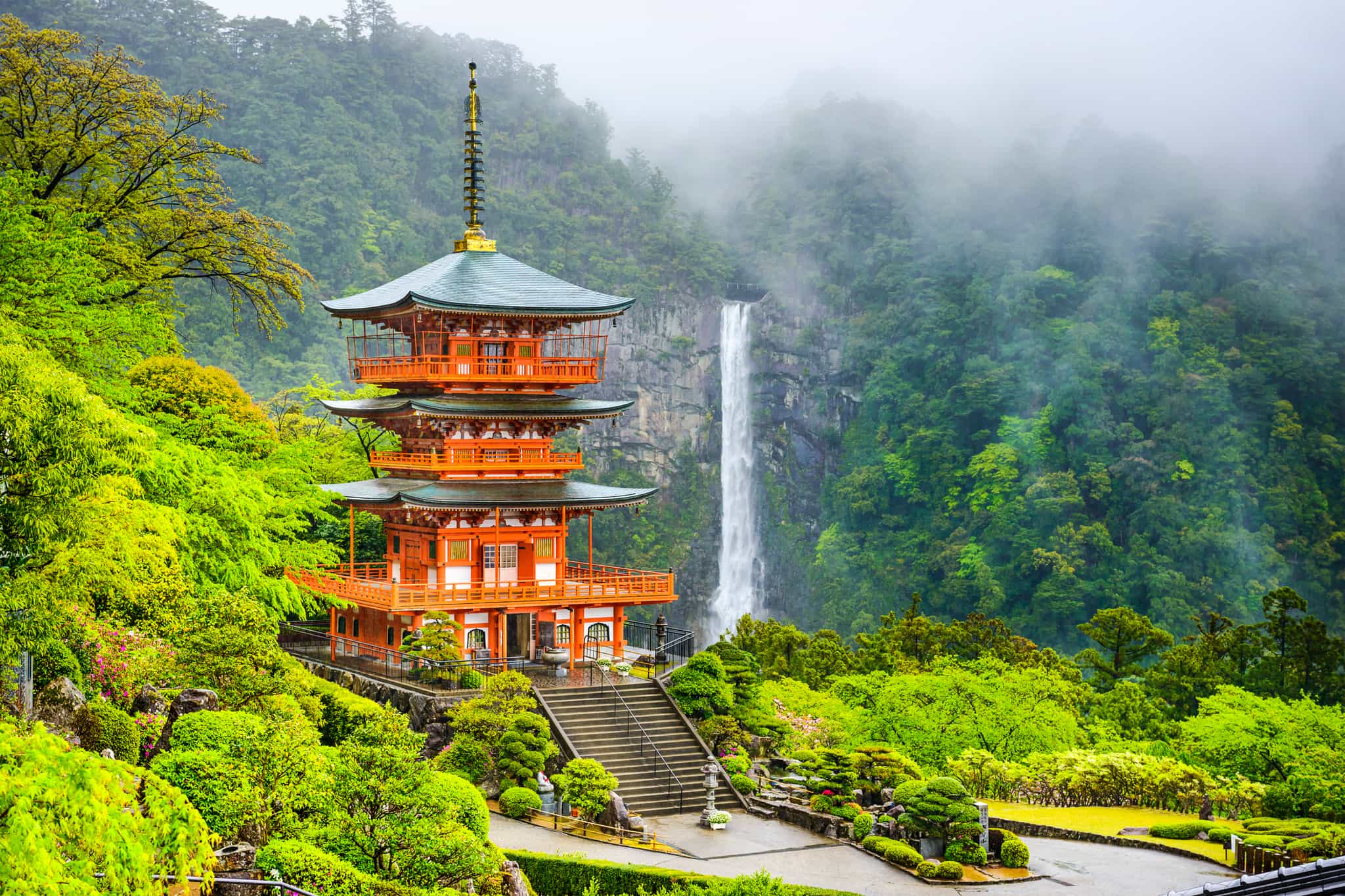
The Ultimate Adventure Through Japan
Hike to Japan's iconic sites and wild spots via neon cities, ancient temples, sacred mountains and pilgrimage trails
What's Included?
Activities & Certified Guides
All itinerary activities with expert, English-speaking guidesAll accommodation
7 nights in comfortable hotels, 3 nights in traditional 'ryokans' and 1 night staying in a templeMeals
All breakfasts and 7 dinnersTransfers
All transport from the start point in central Tokyo, plus luggage transfer between destinationsEquipment
All your kayaking and cycling equipmentSmall Like-minded Groups
Solo-friendly by design, join our small n’ sociable groups of up to 12 like-minded, active and outdoorsy people…
…
What's it like?






























Trek part of the remote Kumano Kodo, one of only two UNESCO-listed pilgrim routes in the world, to reach Nachi – Japan's tallest waterfall
Kayak and cycle around Lake Yamanakako, then kick back in a steaming onsen with astonishing views of iconic Mount Fuji
Roam zen gardens and splendid shrines in Kyoto and explore the bright lights of Tokyo and Osaka, where cutting edge modernity and ancient traditions co-exist
Spend a night at a temple with the Buddhist monks of Koyasan, and immerse yourself in Japanese culture as you bed down in cosy ryokans serving tasty traditional food
Key Information
Day 1
Touch down in bustling Tokyo
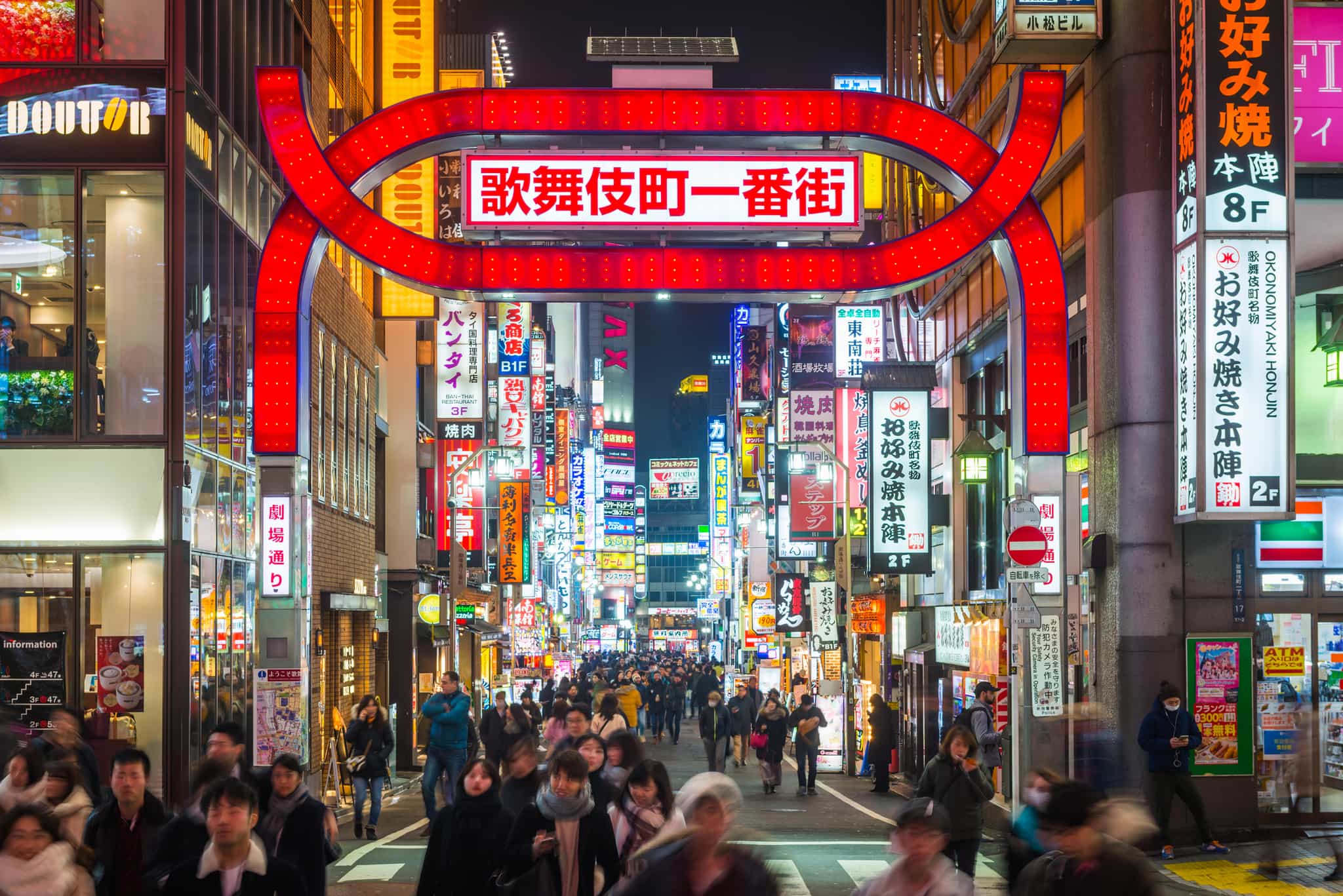
Konnichiwa – welcome to Japan! Upon arrival at Haneda or Narita Airport, make your own way to your hotel (see FAQ for info on the shuttle service) which is located in the buzzing central district of Shinjuku, bursting with contemporary urban culture, towering skyscrapers and countless shops and restaurants. As this trip includes very little time in Tokyo, we strongly recommend that you arrive at least a couple of days earlier to adjust to the jet lag and to experience all the amazing attractions the world's largest metropolis has to offer. Meet up with your guide and fellow adventurers at 16:00 in the hotel lobby to go through your itinerary together, then head out to explore the narrow, winding alleys of Shinjuku's nightlife district, filled with cosy eateries and bars. Tuck into your first Japanese meal in a local izakaya (a Japanese style pub), then get some rest in preparation for the adventure ahead.
Day 2
Iconic Fuji views and Oshino Hakkai village
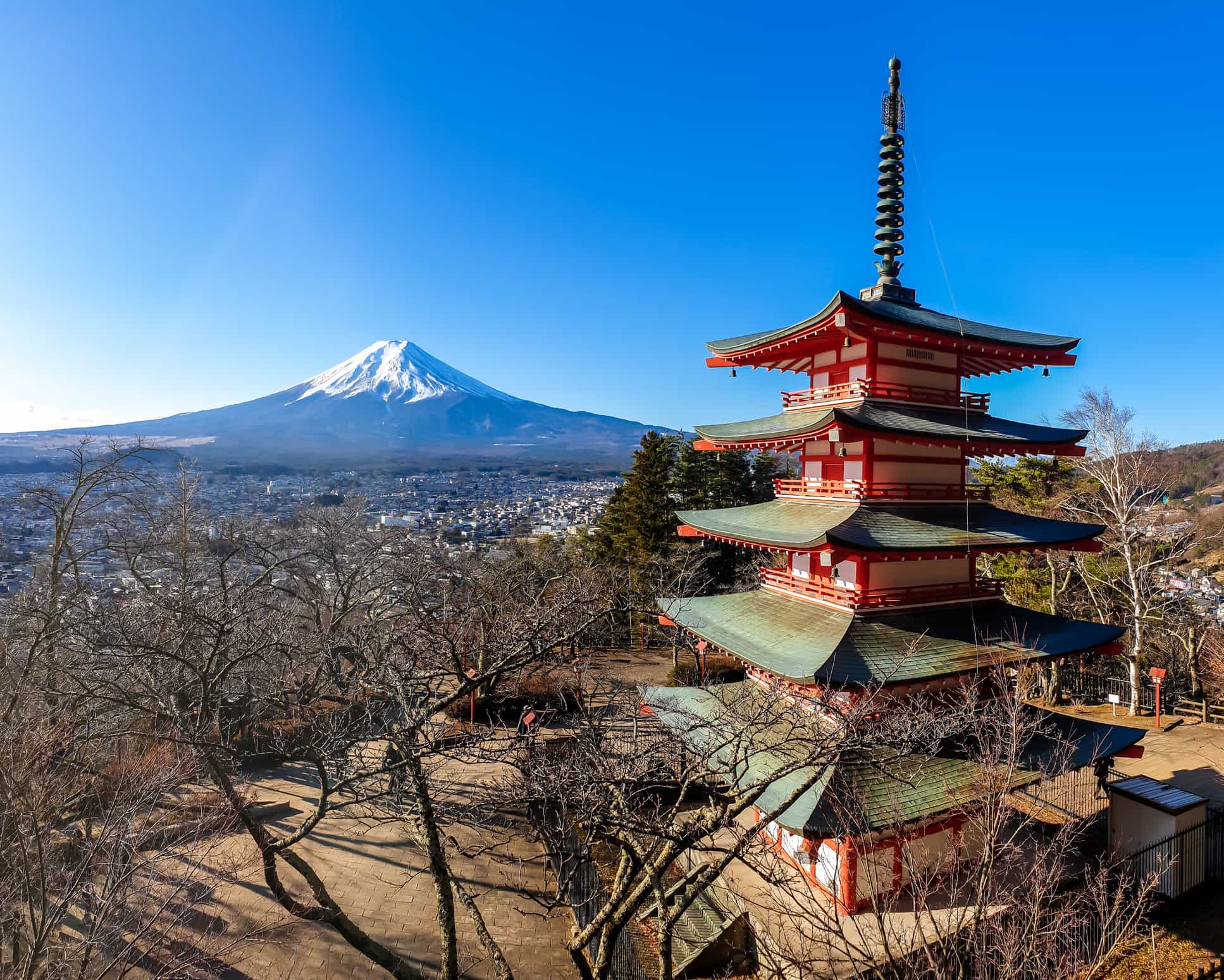
Hiking
Train Ride
Escape bustling Tokyo after breakfast, and enjoy a comfortable 2.5-hour train ride towards the incredible Fuji Five Lakes area, journeying through lush mountain and forest scenery. Upon arrival in Kawaguchiko, travel by public transport to what is arguably Japan's most iconic viewpoint – Chureito Pagoda. Climb 400 steps up Mount Arakura to be rewarded (weather permitting!) with a sweeping panorama of the city below, with a backdrop of magnificent Mount Fuji. Take some time to enjoy the surrounding walking trails and viewing decks before you continue travelling to your next stop – the charming historic village of Oshino Hakkai, where traditional farmhouses sit among clear springs and ponds of meltwater from Mount Fuji. After a busy day of travelling and exploration, check in to your accommodation by Lake Yamanakako, the biggest of the Fuji five lakes.
Day 3
Kayak, cycle and soak in a traditional onsen
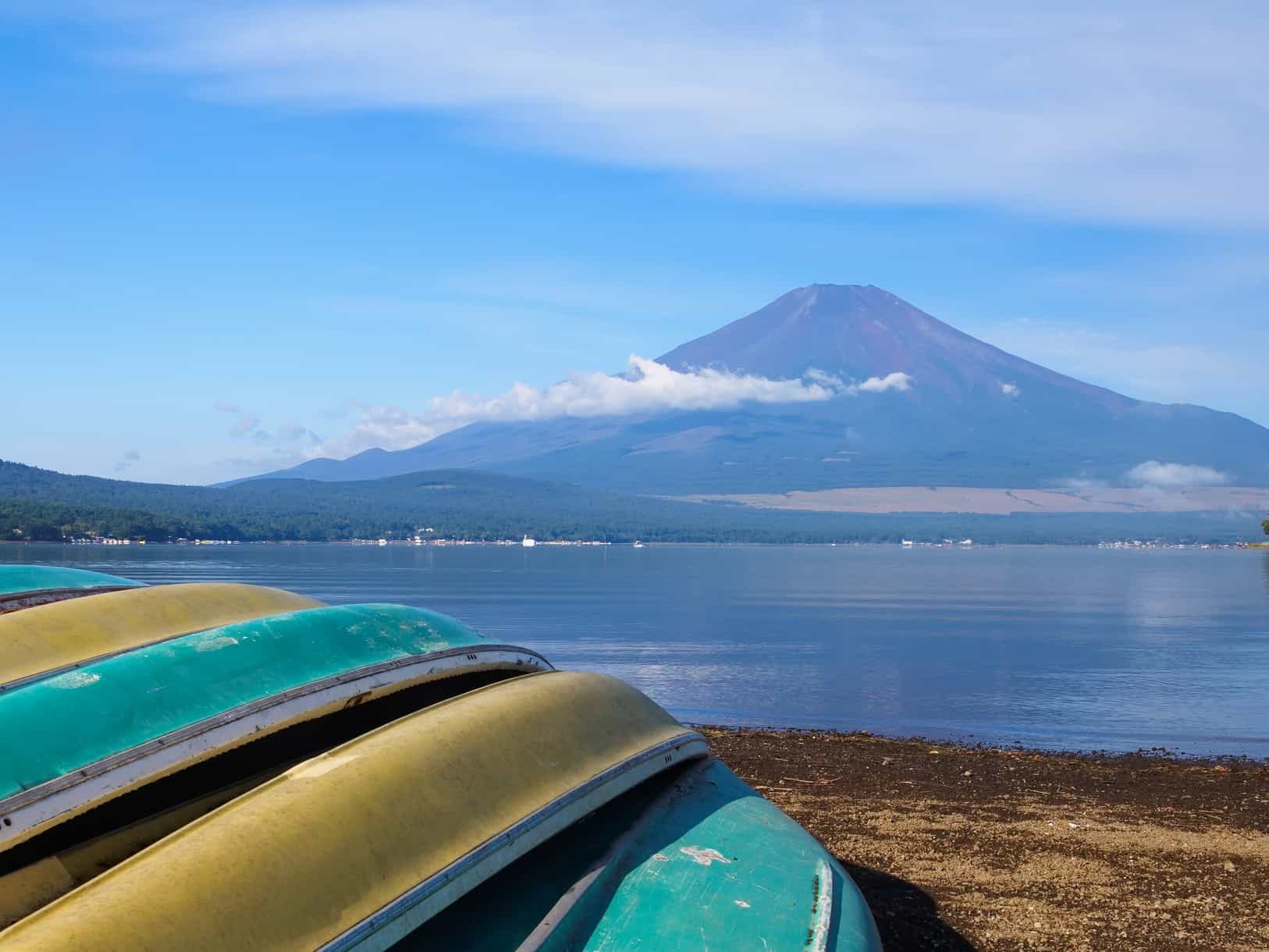
Kayaking
Cycling
Enjoy a laid-back day exploring beautiful Lake Yamanakako, the third-highest lake in Japan, offering majestic views of the Mount Fuji cone from multiple angles when the weather is clear. Set off on an easy bike ride along the easy trails that circle its shores, then hit the water for a bit of kayaking. At the end of the day, get ready for a rejuvenating experience as you'll visit a local onsen, (hot spring). Onsens are an integral part of Japanese culture which have been enjoyed for centuries for their therapeutic and relaxing properties. Soak in a variety of indoor and outdoor communal baths surrounded by a beautiful courtyard, with an incredible view over Japan's iconic mountain – bliss!
Day 4
Hike to Kyoto's Fujimi Inari Shrine
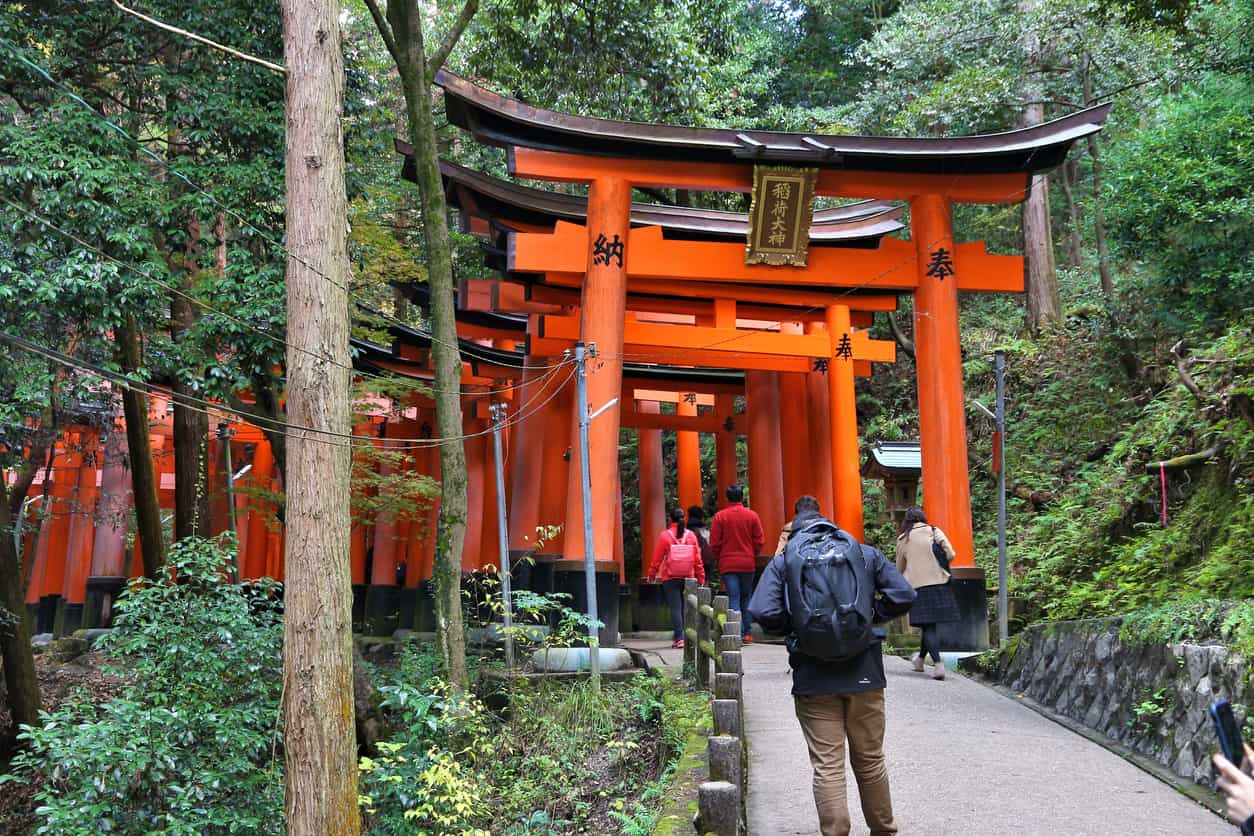
Hiking
Train Ride
Get ready for an early start today as you'll be travelling on to Kyoto – once Japan's ancient capital – which retains much of its historic charm with atmospheric temples, sublime zen gardens, traditional teahouses and geisha roaming the alleys. Your journey there (taking approximately five hours) will involve a mix of public transport including the famous high-speed Shinkansen train, a must-do for a full immersion into Japanese culture. You might want to get yourself a bento-style lunch on the way to eat on the train – just like the locals do. Upon arrival in the early afternoon, start your exploration of the city with one of Kyoto’s most iconic shrines, Fushimi Inari, famous for its thousands of reddish-orange torii gates. Your guide will lead you on a hike through the amazing network of trails winding up into the hills, and you can snap a few artistic shots. Time allowing, walk through the Fushimi District, stopping for some (optional) tastings in traditional sake breweries before returning to your hotel for a good night's sleep.
Day 5
Zen gardens, city temples and high views
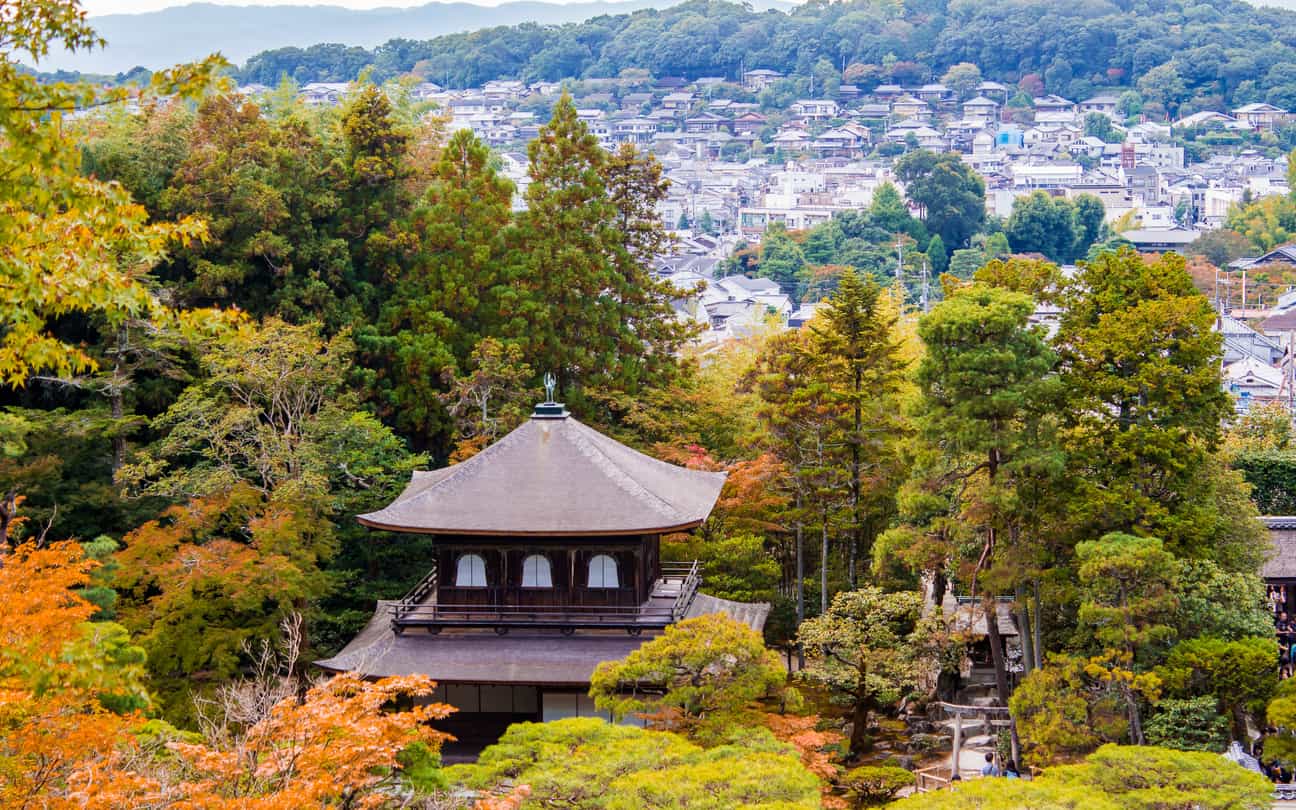
Hiking
Cycling
Spend today exploring some of Kyoto's iconic sights as well as its lesser-known spots, while enjoying an introduction to Buddhism and Shintoism in Japanese culture – particularly relevant, given the places and trails you'll be hiking over the next few days. Start with a bike ride along the Kamogawa River up to the renowned Ginkaku-ji, also known as the Silver Pavilion. Built over 500 years ago, this quintessential Zen temple is nestled in Kyoto's eastern mountains and is surrounded by sublime Japanese gardens dotted with ponds and moss. Next, take a short but steep hike up Mount Daimonji-yama, from where you’ll enjoy a great panoramic view of the city. On your way back to the hotel, walk along Philosopher’s Path, particularly scenic during the cherry blossom season. Back in town, the afternoon is yours for you to choose your own adventure – however active or relaxing you want it to be. Later on, don't miss a visit to the historic Gion area of town, where you might spot a geisha or two.
Day 6
Hike the river valley of Mount Takao
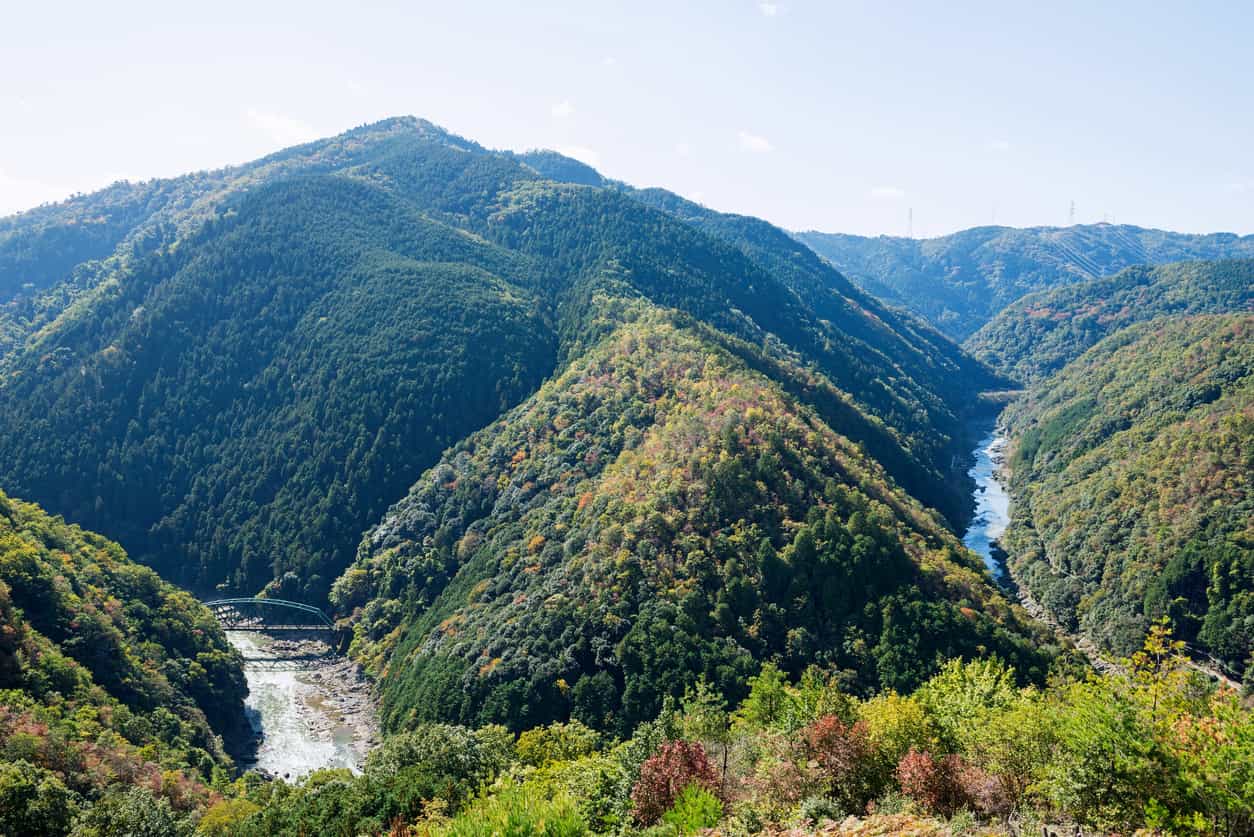
Hiking
Escape the city today to hike the scenic natural area in the northwestern mountains of Kyoto. The trail starts from the charming mountain hamlet of Takao, following a river downstream through the mountains and valleys to Hozukyo, passing by two superb thousand-year-old temples, a crystal-clear water course and a magical waterfall. The area is stunning year-round, but becomes particularly picturesque in autumn with mind-blowing colours. After the hike, you may decide to catch a train and bus back to the city for some rest or you can hop off in the popular district of Arashiyama to spend the afternoon exploring the famous bamboo grove, relaxing in a few of the dozens of zen gardens, or mingling with hundreds of friendly, semi-wild Japanese macaques (snow monkeys).
Day 7
The sacred trails of Koyasan
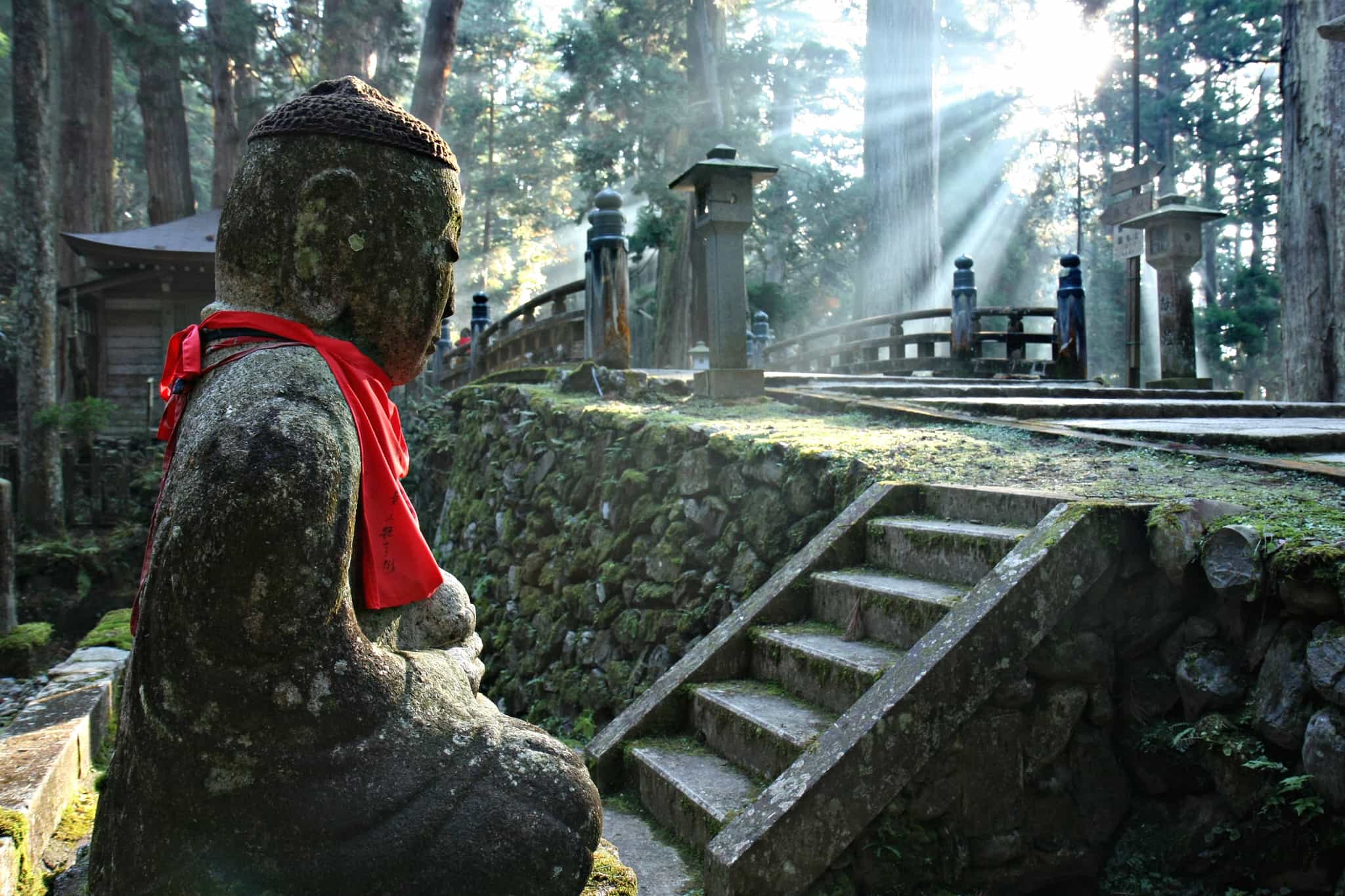
Hiking
Train Ride
Today, you’ll be swapping the fast rhythm of city life for the serene beauty of Koyasan’s forested mountains – one of Japan's most sacred sites and the most important centre of Shingon Buddhism. Leave your hotel after breakfast and take a local train towards Mount Koya (on a journey of around 2.5 hours), where you'll alight to trek part of the Koya-san Choishi Michi trail, passing by the stone signposts (choishi) which stand every few hundred metres, which were placed to help the original pilgrims find their way. Reach the monastery complex and stroll around the serene grounds of Okunoin Cemetery, the final resting place of many of the nation’s most important historical and religious figures. Tonight you'll experience an overnight stay at a simple temple lodging (shukubo) where you can get a taste of a Buddhist monk's lifestyle: eating vegetarian cuisine (shojin ryori) and experiencing back-to-basics living, surrounded by peace and nature.
Day 8
Morning prayers and ancient hot springs in Yunomine Onsen
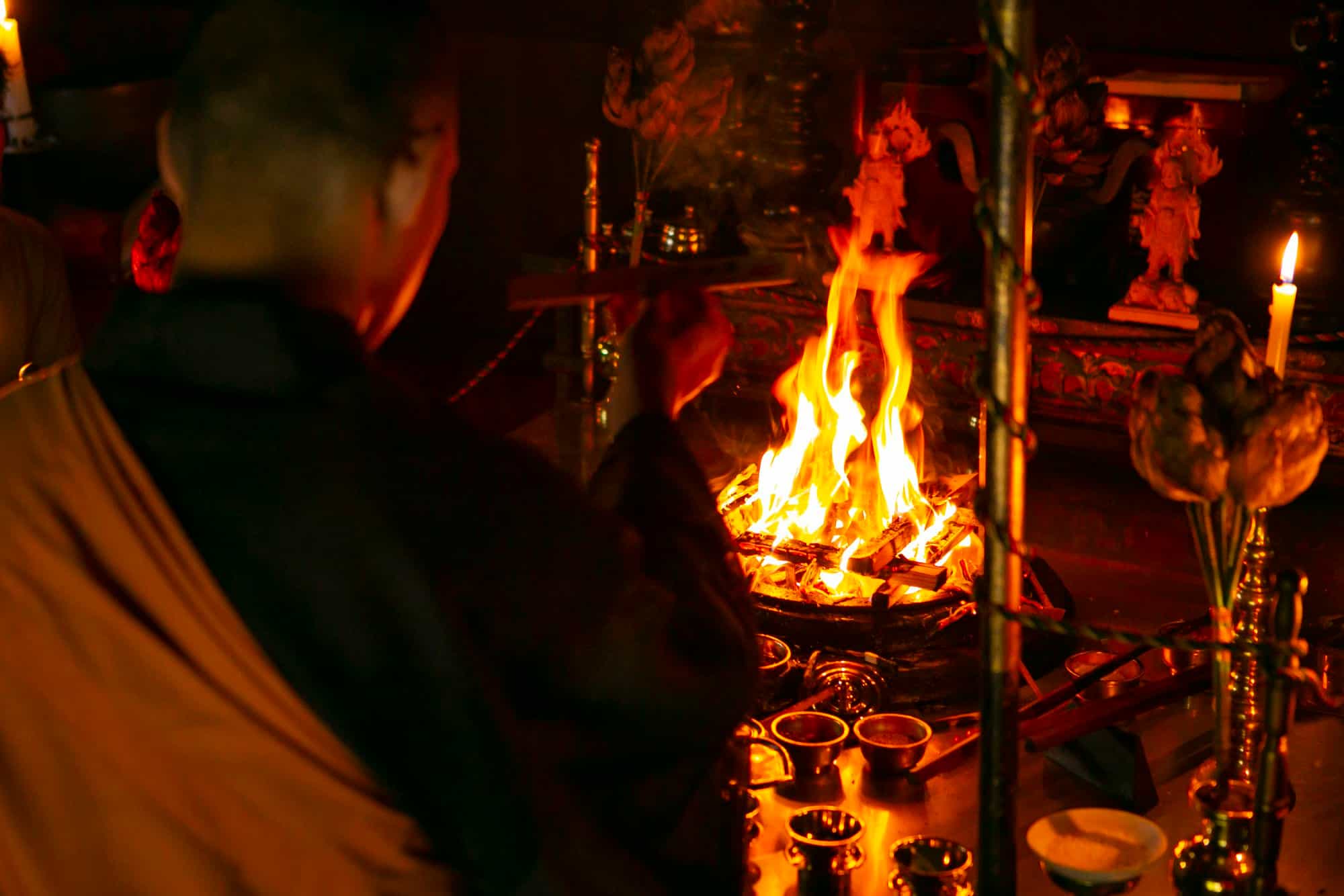
Hiking
Awake early to join the monks for morning prayers, if you wish. Then, set off on a scenic journey (of approximately 4.5 hours) to Yunomine Onsen, weaving through the mountains. Tucked away in the Kii mountains of Wakayama, this remote mountain village hosts what is thought to be the oldest onsen in Japan. UNESCO-listed, it has a history dating back over 1,800 years. Hostels and inns here have long provided respite for trekkers walking the ancient Kumano Kodo Pilgrimage Route, which you'll be following for the next two days. You’ll also get the chance to soak in these special medicinal waters after a walk around the village and a visit to Kumano Hongu Taisha – one of the three grand Shinto shrines on this unique pilgrimage trail.
Day 9
The Kumano Kodo trail to Koguchi
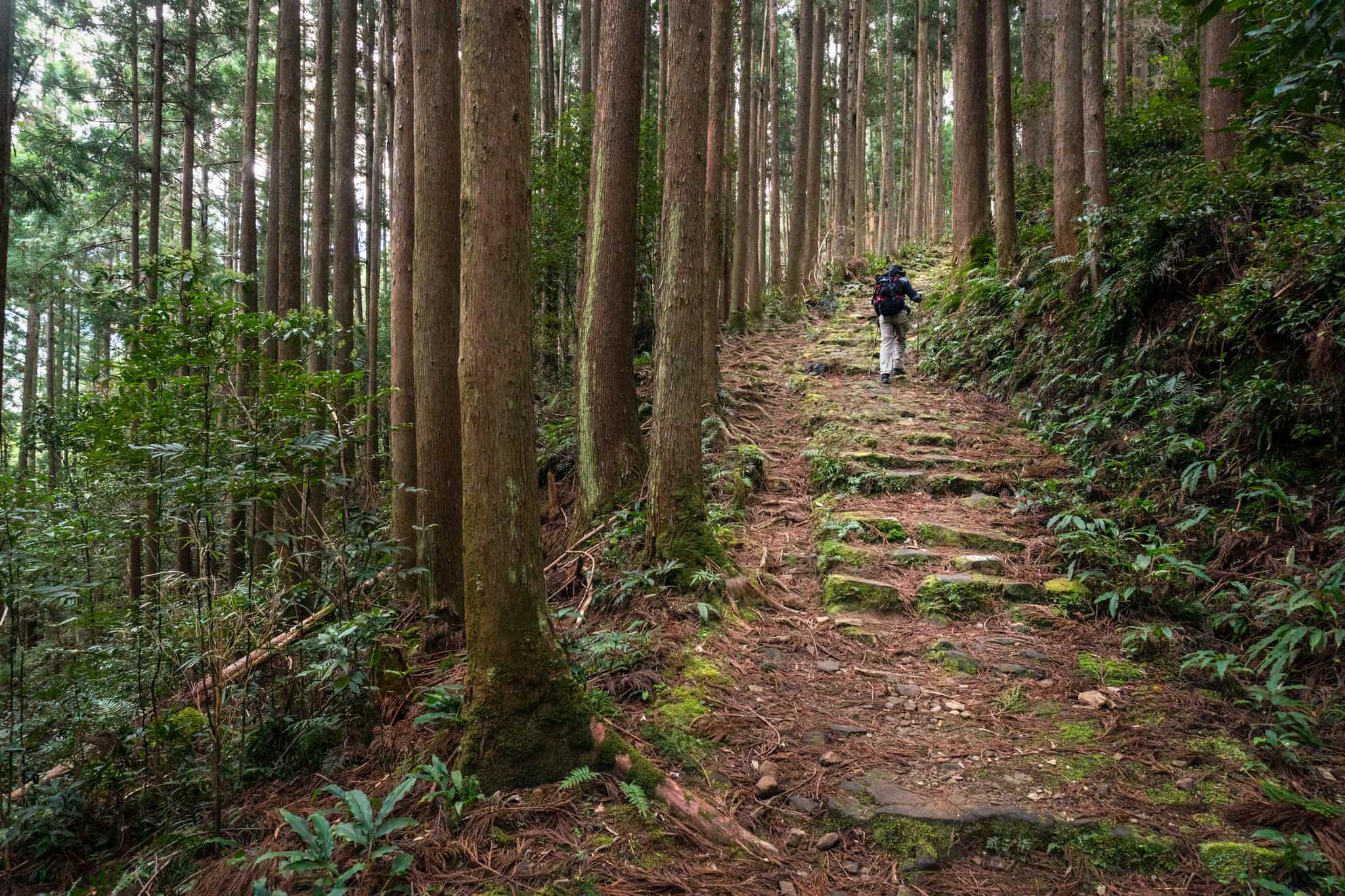
Hiking
Get up early this morning to hike part of the historic Kumano Kodo – one of only two World Heritage-listed pilgrimage routes on the planet. You'll be hiking the Nakahechi section, which traverses east into the mountains towards the Kumano grand shrines. From the 10th century, this route was extensively used by the Imperial Family on pilgrimage from Kyoto. After a short ride by public bus, begin a gradual ascent followed by a continuously undulating trail to the Sakura-toge Pass. You'll be surrounded by pristine, natural forest filled with beautiful cedar and cypress trees. Upon reaching the Hyakken-gura Peak, you’ll be greeted with sweeping views of the mountainous terrain of Wakayama. After that, the trail descends rapidly into the valley below to the small mountain village of Koguchi, nestled by the Akagi-gawa River, where you'll bed down for the night in a local inn.
Day 10
Kumano Kodo trail to Nachi Taisha
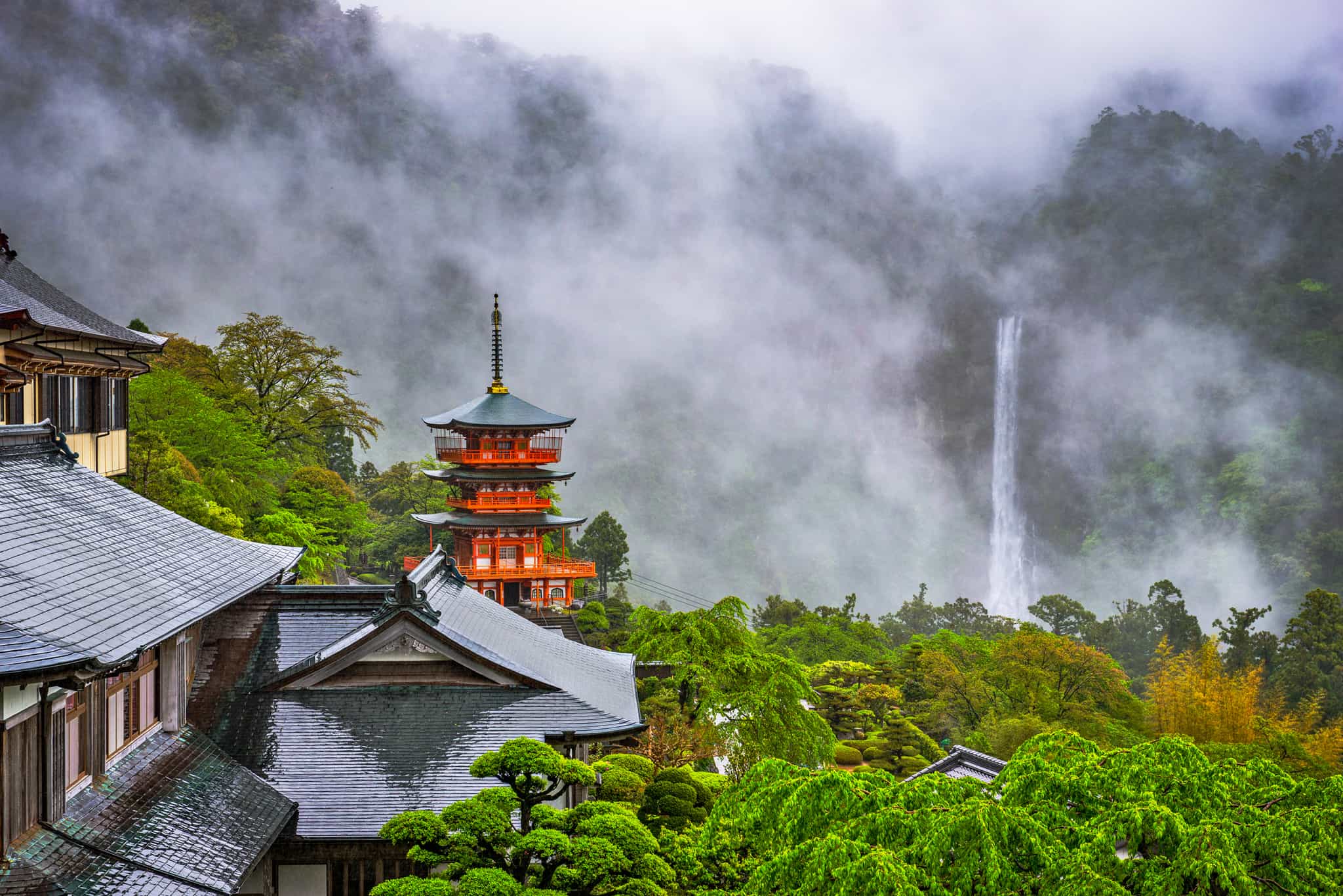
Hiking
Rise early and get ready for an epic full-day hike along the sacred Kumano Kodo trail. Today's hike will be a challenging one! (If you are not feeling up to it, there's always the option to take a local bus to the hike end point and explore the area by yourself, while you wait for the rest of your group.) The ascent from Koguchi has a fierce reputation, and for good reason: expect over two hours of steep ascent at a steady pace. The paths are uneven at times with roots, loose rocks and lots of stone steps. However, you'll be rewarded with some beautiful ups and downs, surrounded by forest and birdsong, until you reach the Funami-toge Pass and the remains of the old Funami-jaya teahouse, offering a brilliant view of the Pacific Ocean and the fishing village of Katsuura on a clear day. Continue mostly downhill for the rest of the trek to Nachi Kogen Park, then down to the Nachisan Sanctuary, where you'll finally reach the stunning Seiganto-ji Pagoda and Japan's tallest waterfall, with an uninterrupted drop of 133 metres surrounded by primaeval forest. Enjoy the sublime evergreen scenery – and a sense of accomplishment! – before heading to Kii Katsuura by bus in the late afternoon.
Day 11
Osaka city lights
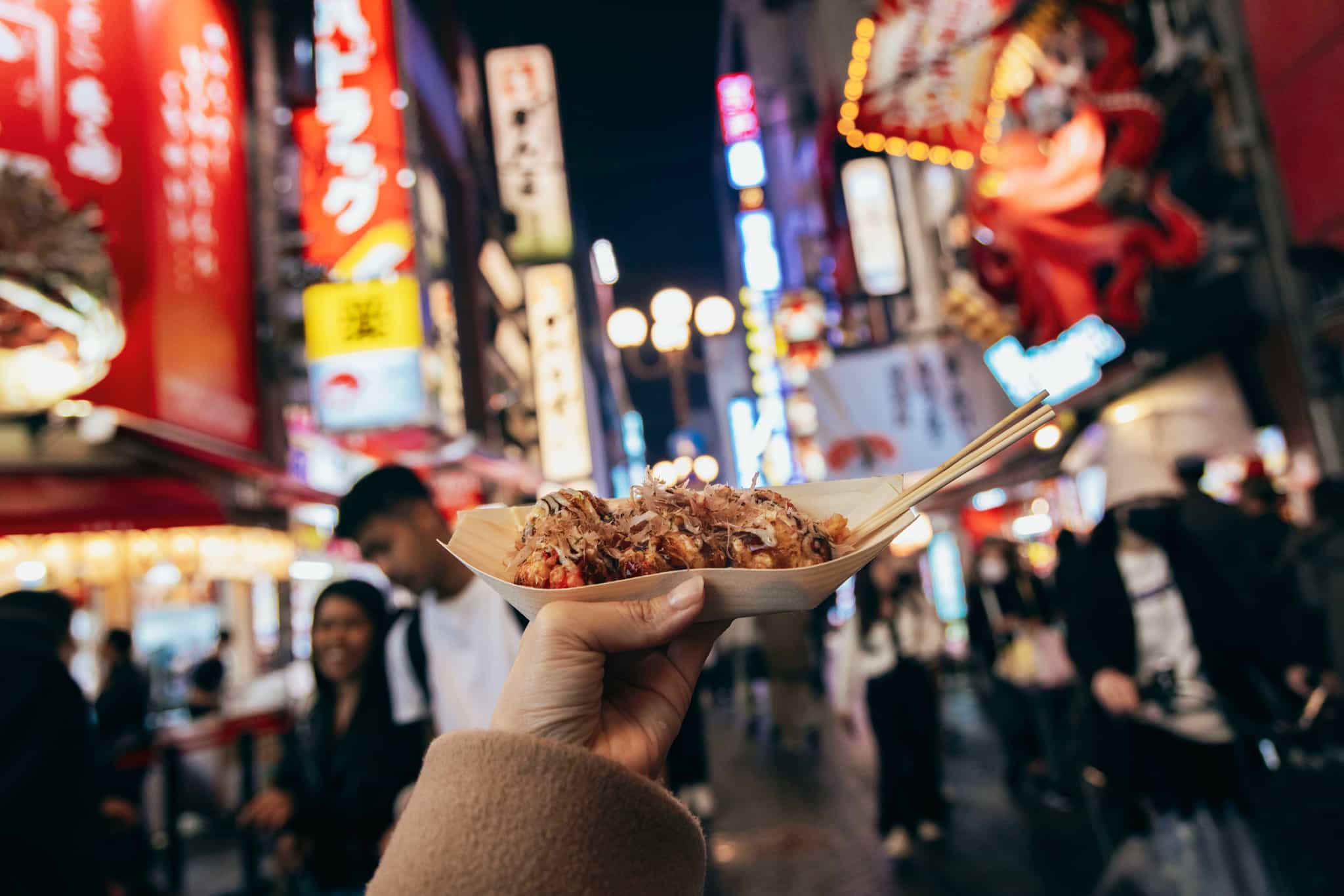
Train Ride
In the morning, visit the local tuna market, where fish from the cool waters of the Pacific is traded daily. Then hop on a train and rest your legs on the long journey to Osaka (approximately five hours). Check in to your hotel in the afternoon and enjoy some free time to relax and freshen up, before heading out for a walking tour with your guide around the famous Dotombori – the city’s most popular shopping, food and entertainment district. It is at night that this area really comes to life, with hundreds of neon lights and signs glowing in the streets. Enjoy a farewell dinner at a downtown restaurant and gaze out across the city as you toast the end of your unforgettable Japanese adventure!
Day 12
Sayonara Japan!
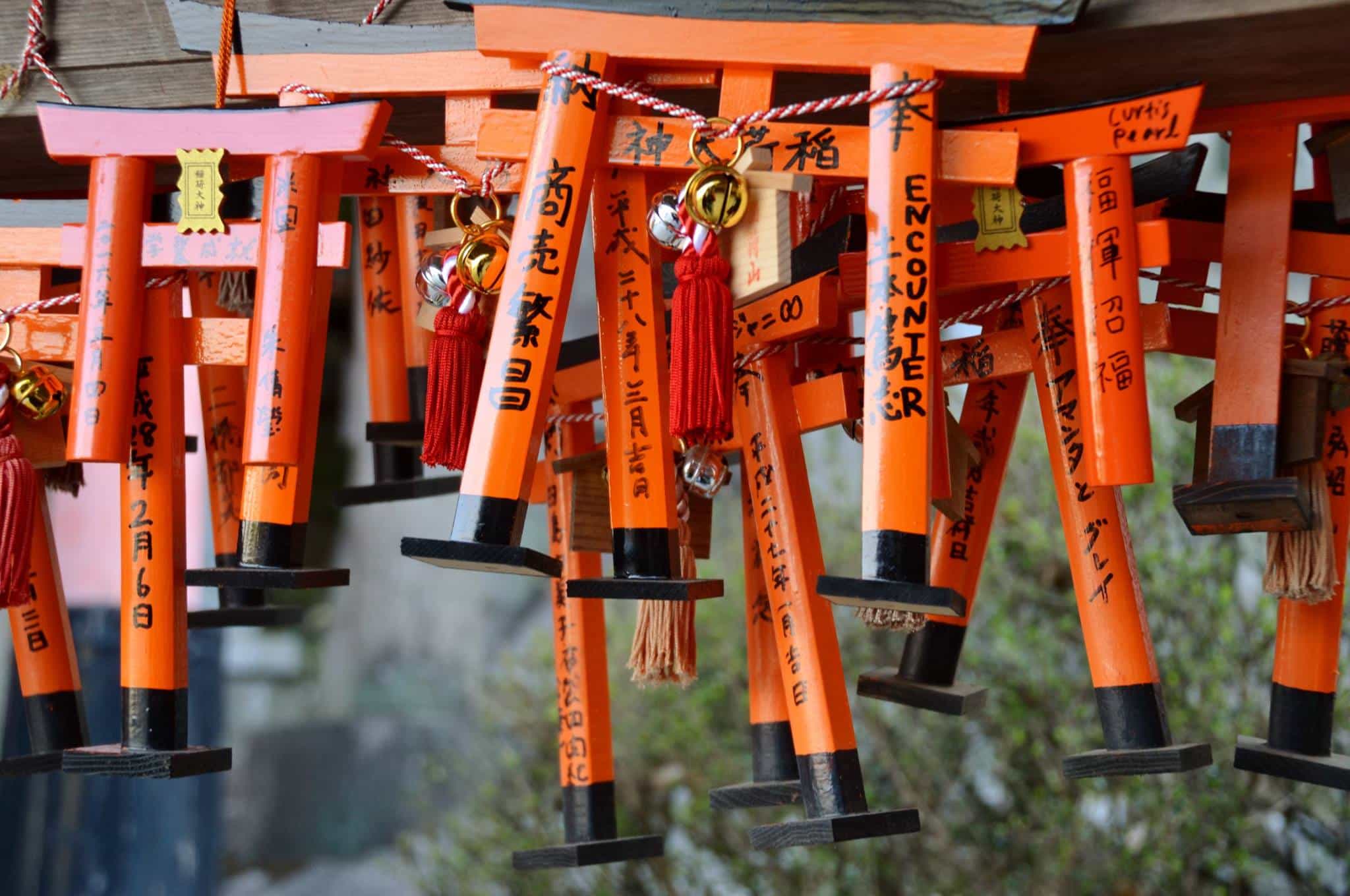
It’s time to bid farewell to your guide and your group after breakfast; you are free to depart any time. If you have later onward connections, you will be able to store your luggage at the hotel reception during the day. If you have the time, we thoroughly recommend staying on for a few extra days to explore more of this unique country. You can choose to fly back home from Kansai Airport near Osaka, or alternatively, hop on the 2.5-hour bullet train back to Tokyo and depart from there.
The Area
Logistics
Starts
Your hotel in Tokyo
16:00 on Day 1
Ends
Osaka city centre
Depart any time on Day 12
Transfers
The hotel where you'll begin your trip in Tokyo (the Shinjuku Washington Hotel) is conveniently located just an eight-minute walk from Shinjuku Station and is serviced by frequent and reliable airport shuttles from both Narita and Haneda airports, which stop right opposite the hotel. Arrival transfers are not included in the trip, but it's easy to pre-book your airport shuttle via the official website. The cost is approximately 1400 JPY, payable on the website, and the journey time is around one hour. A general taxi fare will cost around JPY 6,000-10,000. On Day 1 you'll meet your guide at the hotel's lobby at 16:00 for a welcome briefing, so we strongly recommend booking a flight that lands in the morning to give yourself ample time to reach the city and check in.
On Day 12 you are free to depart Osaka at any time, and although the hotel's check-out is usually at 10:00 you can store your luggage for free at the hotel if you have a flight departing later in the day. You can choose to fly out from Kansai Airport (KIX), which you can reach by train (from Namba or Tennōji stations) in approximately one hour for about 1600 JPY. A taxi to Kansai Airport costs around 15,000 to 18,000 JPY. Your guide will of course be to hand to provide detailed instructions on the best way to reach the airport if you need them. Alternatively, you may choose to hop on the 2.5-hour bullet train back to Tokyo and book your return flight from there.
Travel options
There are daily direct and indirect flights to Tokyo from major airports across the UK, Europe and North America. Haneda Airport is located closer to the city than Narita Airport, so it should be your preferred option where available. Returning from Kansai International Airport, you may find either direct flights or connections via Tokyo.
Day 1
Breakfast
Lunch
Dinner
Day 2
Breakfast
Lunch
Dinner
Day 3 – Day 6
Breakfast
Lunch
Dinner
Day 7
Breakfast
Lunch
Dinner
Day 8 – Day 10
Breakfast
Lunch
Dinner
Day 11
Breakfast
Lunch
Dinner
Day 12
Breakfast
Lunch
Dinner
What is the food like?
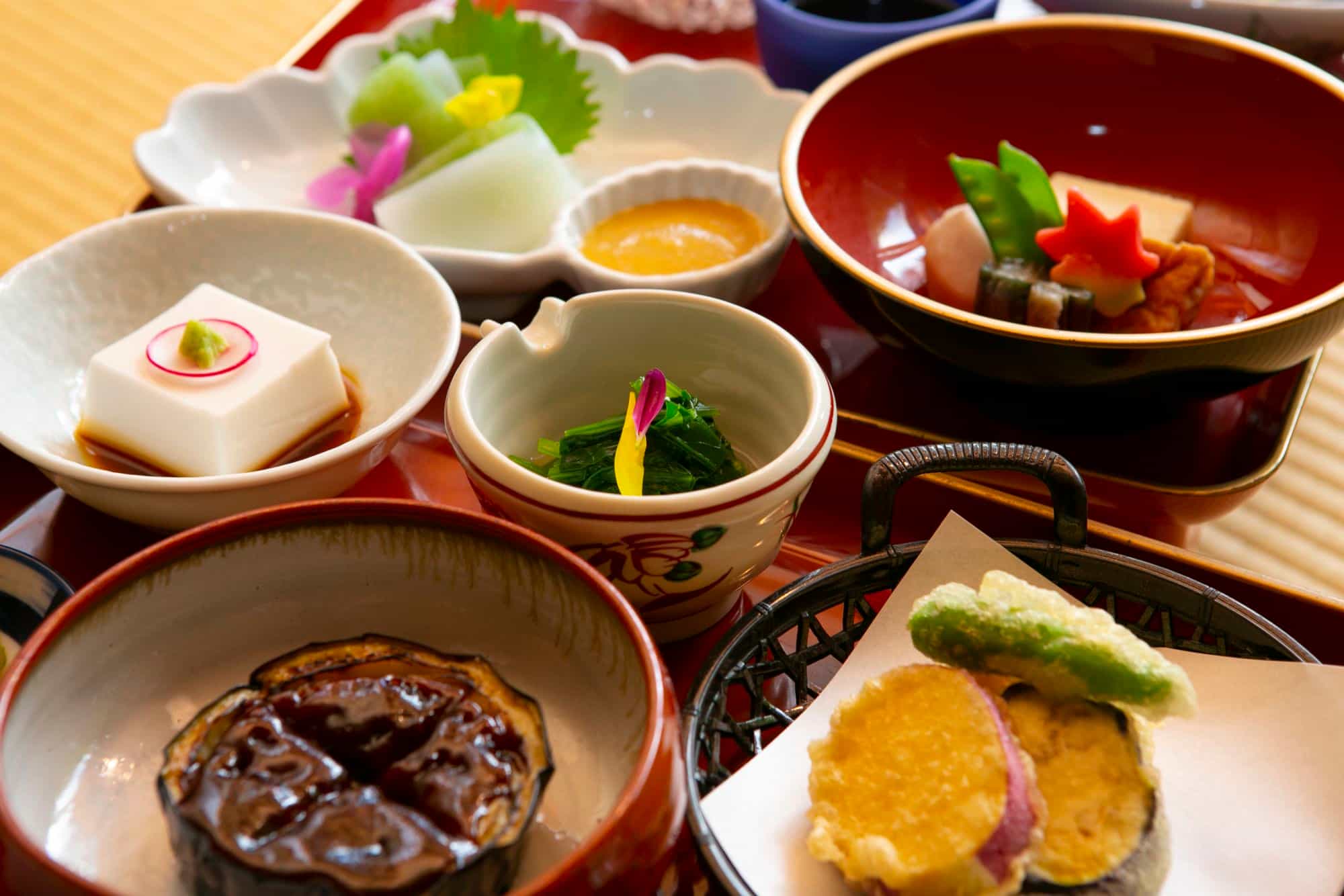
Japanese cuisine will be without doubt a highlight of your trip, with deliciously fresh and varied dishes and a bowl of steamed rice included in most typical meals. Side dishes are called okazu and are served with miso soup. Meals tend to be fish- or seafood-heavy and are often served with sake. Street food is easily found in the cities, whereas traditional set meals are more prevalent in rural locations and while staying in ryokans. The dinners that are included on this trip are taken at traditional guesthouses which serve a kaiseki-style dinner: a multi-course meal including dozens of tiny dishes prepared with locally sourced, seasonal ingredients. When food is not included, your leader will always recommend the best local eateries and arrange group meals for full immersion in the varied and excellent local cuisine. While travelling on trails or trekking, bento lunches can be sourced from stores in the towns or stations before setting out each day.
Please note: in Japan, the availability of certain specialised products for restricted diets (e.g. gluten-free, vegetarian or vegan) may be limited, so we highly recommend that vegetarians, vegans and coeliacs do their own online research about some of the options that might be available to them before travelling. While your guide will assist you whenever they can, there may be some included meals in remote areas that are fixed in advance and not easily adapted to specific diets (such as the meals included at ryokans). For those suffering from particular food allergies, your group leader will endeavour to disclose to their fullest knowledge the main ingredients in dishes being consumed. There are an increasing number of vegetarian and vegan restaurants in the big cities.
What is the accommodation like?
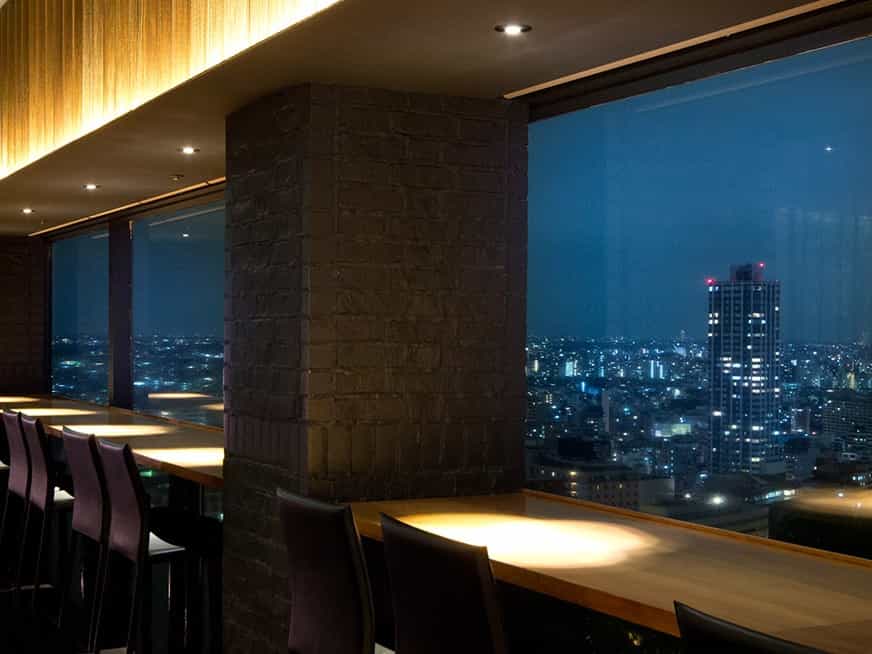
Tokyo
In Tokyo, you'll usually stay at the comfortable Shinjuku Washington Hotel. Conveniently located in the centre of Shinjuku, one of the city's most popular districts, it's next to the Tokyo Metropolitan Government Building and close to shopping and entertainment venues. Looking out to amazing views of towering skyscrapers, the hotel includes three restaurants and bars. Accommodation will be in twin-shared rooms, furnished with a TV, telephone, high-speed internet access, air conditioning, hairdryer, refrigerator, bath, shower and toilet.
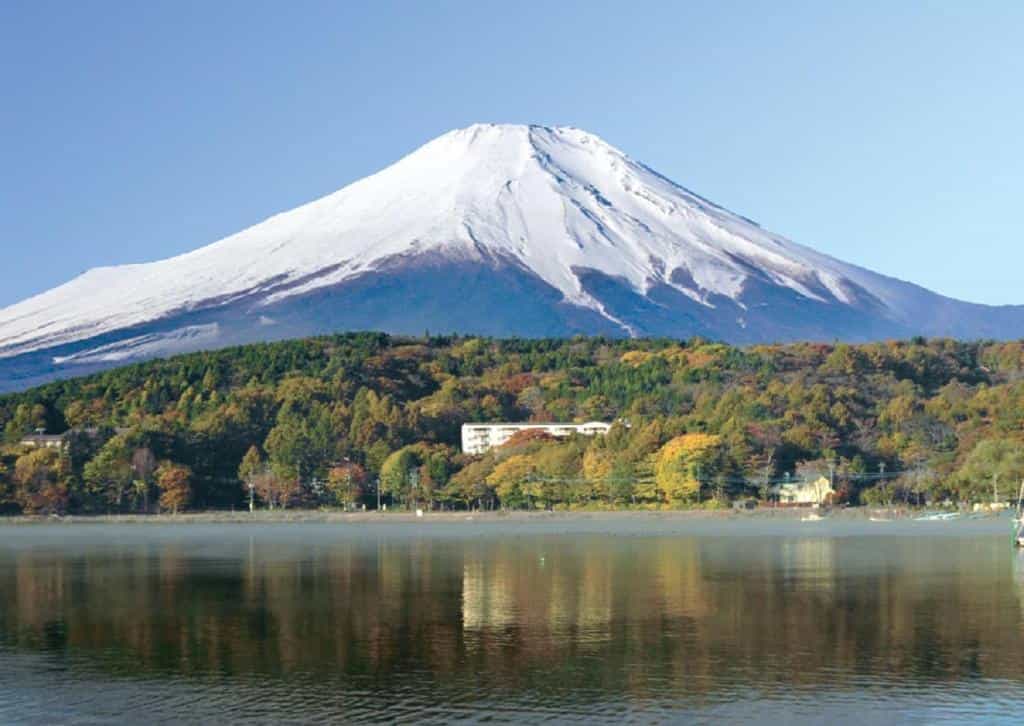
Yamanakako
In Yamanakako you'll usually stay at the comfortable Fujisan Garden Hotel. You'll bed down in en suite rooms on a twin-share basis, with free WiFi throughout. The property provides easy access to the stunning Yamanakako Hiking Course and is within walking distance of the lake and local onsens. Occasionally, subject to availability, the group may be accommodated in a different hotel of a similar standard.
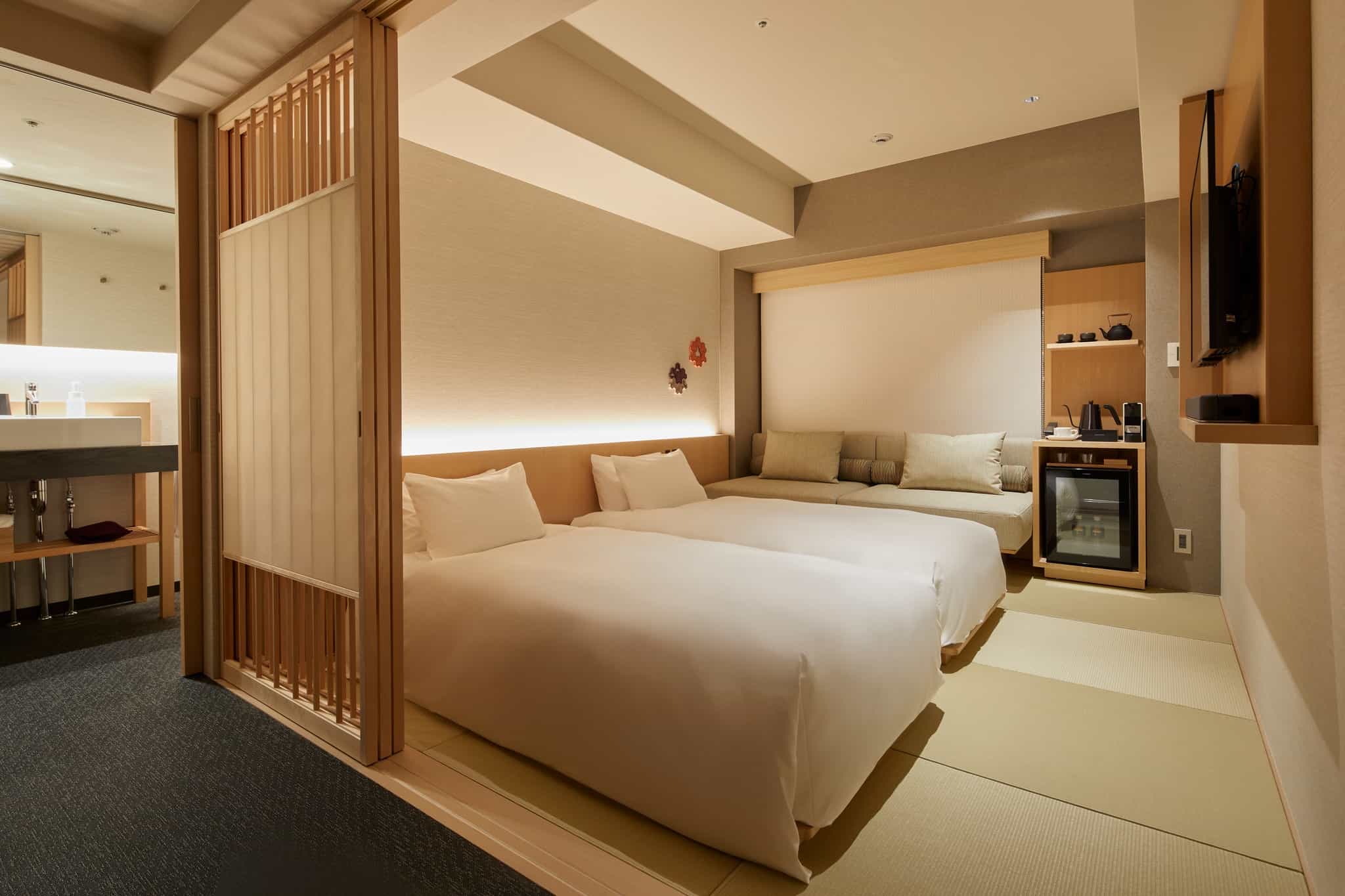
Kyoto
While in Kyoto you'll bed down at the stylish and comfortable Agora Kyoto Karasuma Hotel. You'll stay in air-conditioned rooms with minimalistic design on a twin-share basis. The hotel also has a restaurant and free WiFi.
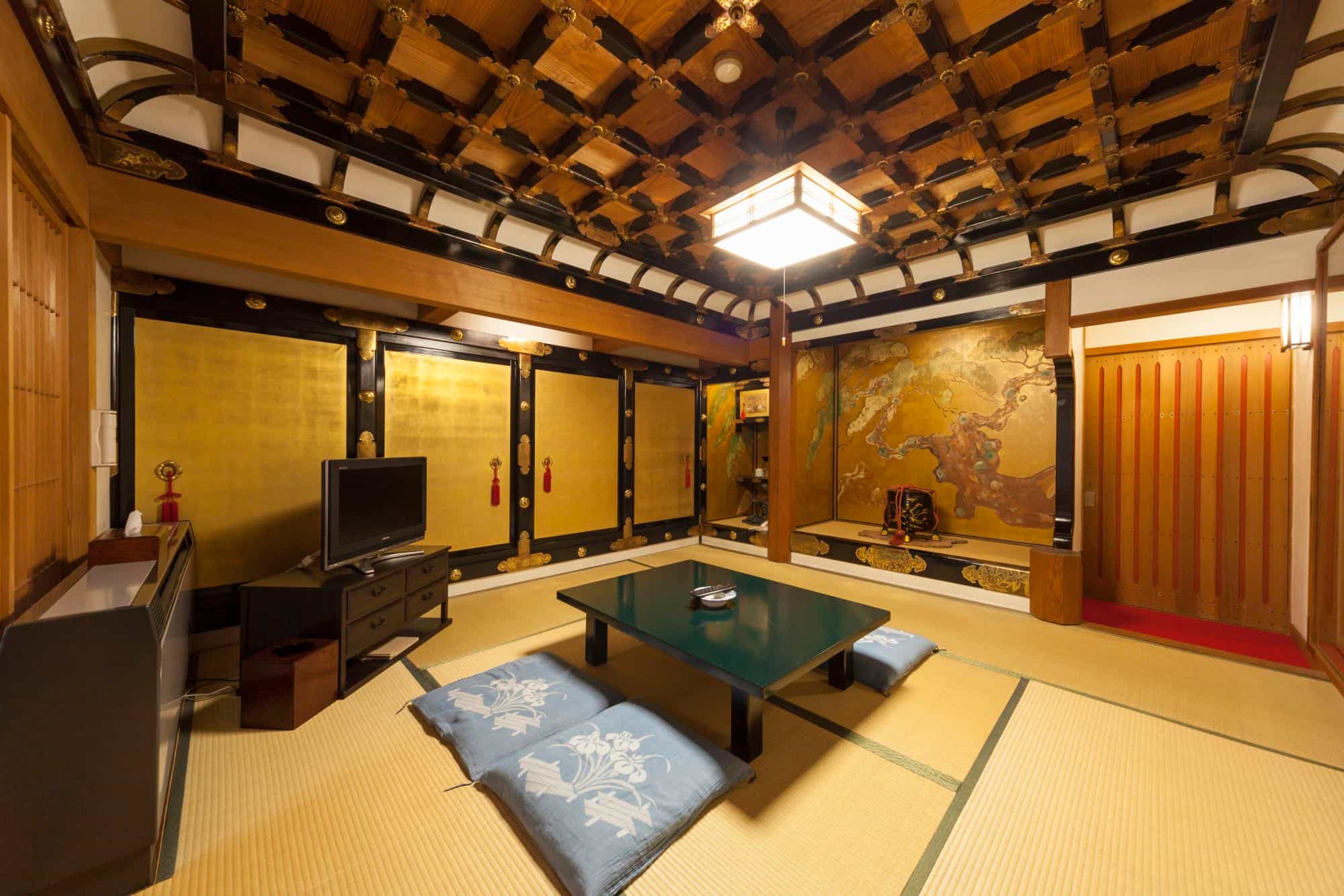
Koyasan
In Koyasan you'll experience a night in a traditional temple lodging at Shukubo Temple. Offering an excellent chance to get a taste of the traditional lifestyle of Buddhist monks, the lodge will offer simple Japanese twin-share rooms, sliding doors (fusuma) and shared toilets and sinks. Bedding is provided in the form of futons that are spread on the tatami floor during the night. Dinner is usually served around 17:30 or 18:00 and will feature vegetarian monks' cuisine (shojin ryori). You'll also be invited to participate in morning prayers which typically start around 06:00 and are followed by breakfast.
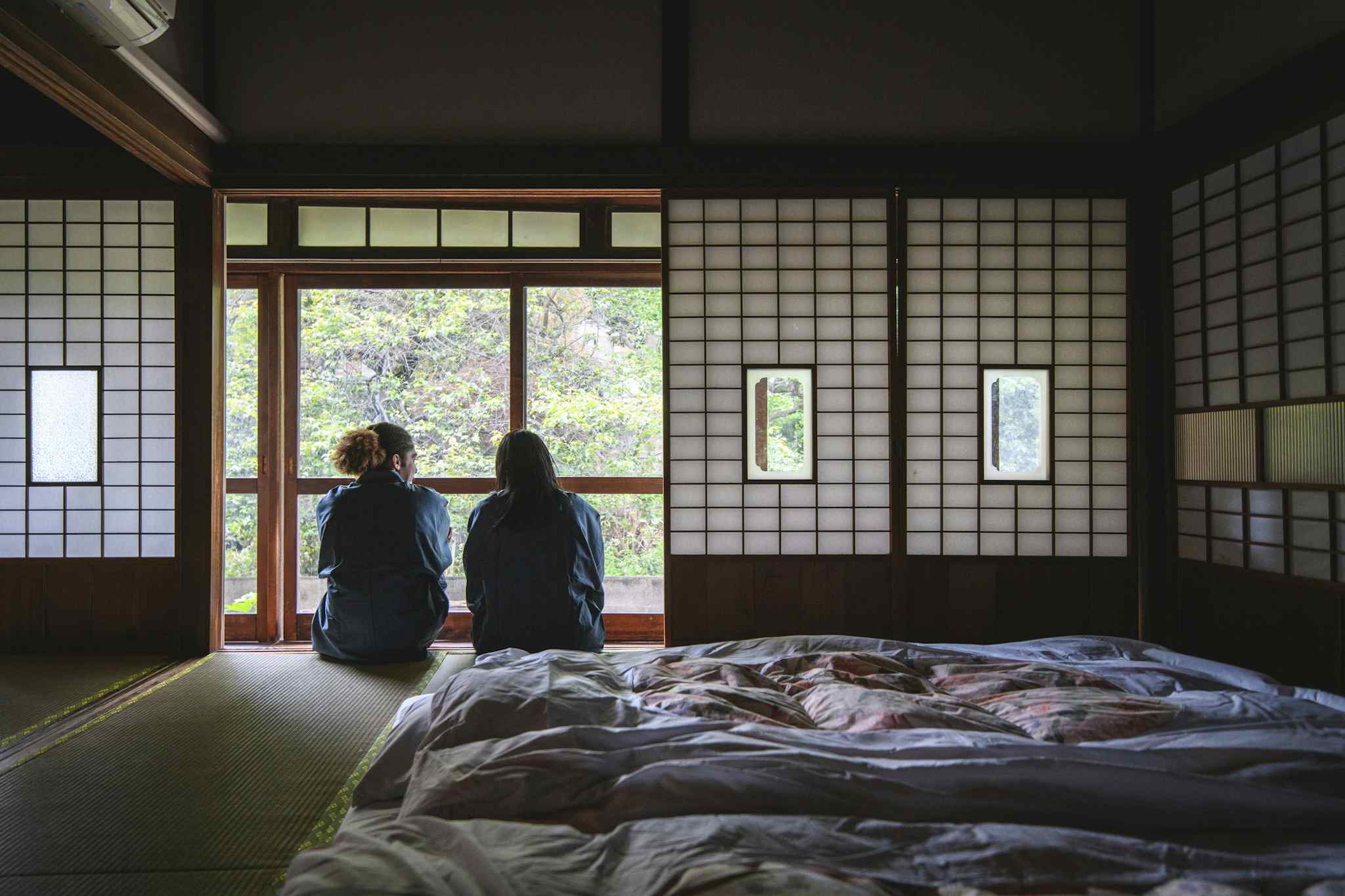
Kumano Kodo
While trekking along the Kumano Kodo trail, you'll spend three nights in ryokans (traditional local inns). Staying in a ryokan is a quintessential Japanese experience; you will sleep in twin-shared rooms, on futons on top of tatami mats on the floor. Most ryokans provide robes and slippers, which are often worn to dinner, and will also have a communal onsen (bath) on-site instead of individual showers and bathrooms for each rooms. Onsens at the ryokans are usually shared hot springs that are either fed from a natural source or kept warm via mains heating. There are separate male and female times for the baths and there is strictly no mixing – you will need to wash before you get into them and clothing or swimwear is not allowed. Your guide will assist with the full etiquette when you are there.
The exact ryokans you will stay in will depend on group size and availability but some examples are:
- Yunomine So in Yunomine Onsen
- Shizen No Le in Koguchi
- Minshuku Wakatake in Katsuura
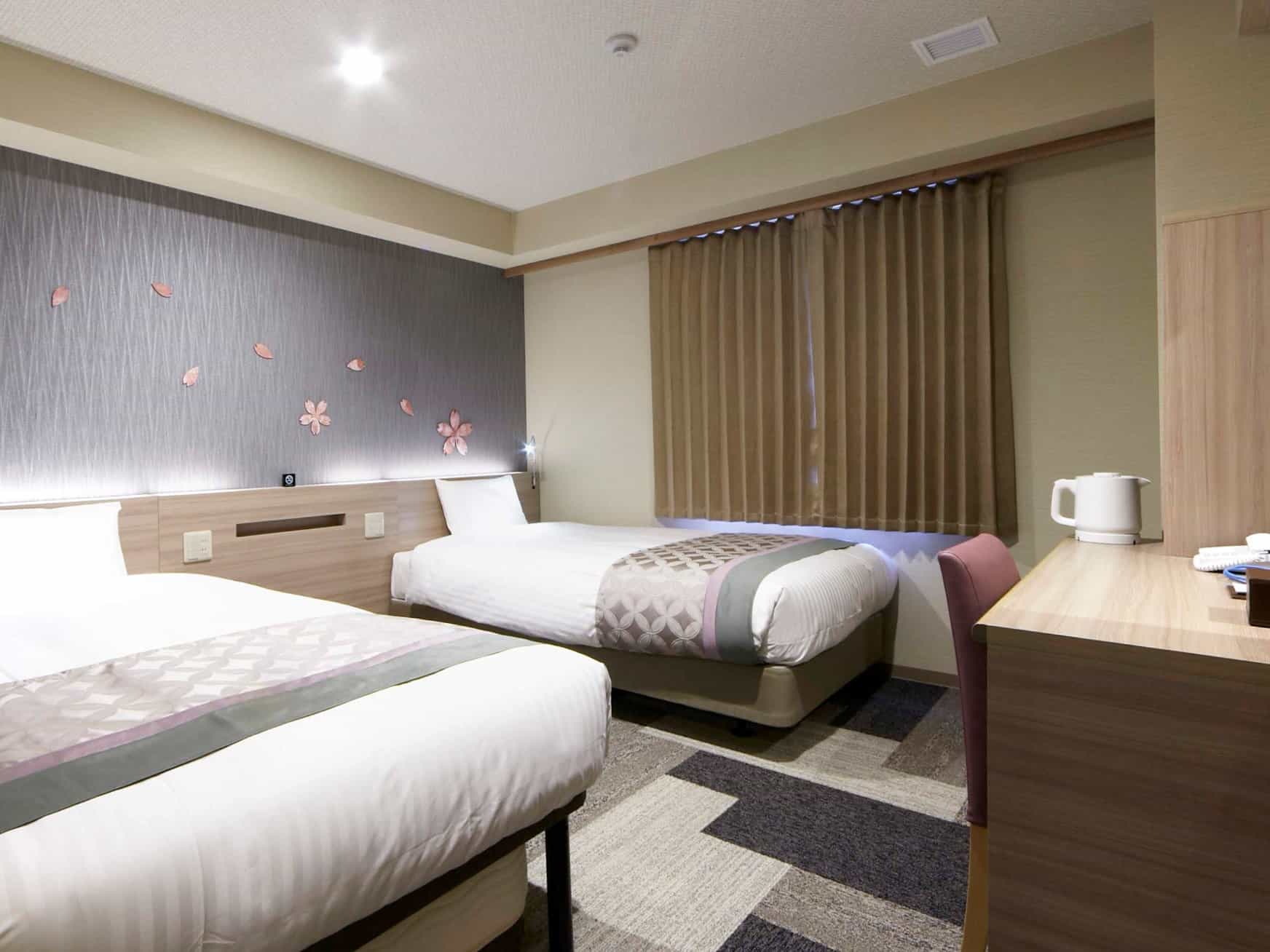
Osaka
Spend your last night of the adventure in Osaka at the central Bridge Hotel, situated in Shinsaibashi District with easy access to plenty of local attractions and sights. The 3-star property features air-conditioned, ensuite rooms with a TV, kettle and a safety deposit box, where you'll stay on a twin-share basis. You'll also find slippers, free toiletries and a hairdryer in your room.
Upgrades
For solo travellers looking for their own space, an optional private room can be requested for Days 1, 4, 5, 6 and 10 of this trip (while in Tokyo, Kyoto and Osaka; subject to availability). A private room is not available on the other nights. Please see Optional Extras for the price and add this as a request at the time of booking.
This trip has been rated as Moderate
The active and fast-paced nature of this trip means that the fitter you are, the more you will be able to enjoy it. Previous hiking and cycling experience is preferable, although not essential. The first part of the trip (up to Day 6) will include more leisurely days of exploration and easy hikes or rides manageable by anyone in good health. However, you'll find the treks in Koyasan and Kumano Kodo to be of moderate to challenging difficulty (depending on your personal fitness), with an elevation gain of more than 1000m on one hike and some trails along uneven terrain. You'll have the option to skip the more challenging hike on Day 10, should you not feel up to it. On a couple of the hikes, you will need to be able to carry your own pack of overnight essentials while on the trail, because your main luggage will be forwarded to the next destination.
In some destinations you will be staying in traditional ryokans – Japanese-style inns with shared facilities. It’s a great taste of traditional life, but not everyone finds futon mattresses on the tatami mat floor as comfortable as beds in Western-style hotels, so a sense of adventure and adaptability is crucial to enjoy the experience!
What will I need to carry?
Your trip will include a conveinent luggage transfer between destinations, so that you don't need to bring your heavy luggage with you to the most remote areas nor while trekking. This means that for a few nights during the trip, you will be without your main luggage, and instead carrying only a smaller rucksack packed with essentials for an overnight stay and one or two days of activities.
Overall, it is essential that you pack light and compact for rail travel in Japan, because there are size restrictions for luggage on Shinkansen trains. Luggage from 160cm to 250cm may require an additional JPY1000 oversized luggage fee per train journey. Luggage over 251cm will NOT be permitted on the Shinkansen trains at all.
Please note that only one piece of luggage is included in the luggage forwarding service. If you have extra luggage you'd like to be forwarded, the cost will be about 1800-2300 JPY extra (per transfer) depending on the size. Your leader will be able to advise of the exact cost whilst on your trip.
The arrangements will be as follows:
- On Day 2 your main luggage will be sent to your hotel in Kyoto, as you will use a lot of public transportation to reach the lake town of Yamanakako. Please prepare a light overnight bag for the two-night stay in Yamanakako.
- On Day 7 your main luggage will be sent to Yunomine Onsen, so you'll need to prepare a light overnight bag for the trek and the one-night temple stay on Mount Koya.
- On Day 9 your luggage will be transferred to the accommodation in Katsuura, so you'll only need to carry a day pack with you for the hike on this day and the following day, with things for your overnight stay between the two sections of the trail.
There are four very distinct seasons in Japan, each offering unique sceneries and experiences to enjoy. As this trip includes several days of hiking, it will not run during winter when snow and ice may affect a lot of the more remote trails.
Spring is generally from March to May with sakura (cherry blossoms) being without doubt the main attraction for visitors. This means larger crowds are to be expected at the main sites and in the cities; however, your guide will try to manage the schedule in the most efficient way. Temperatures are usually mild, ranging from 10-15ºC in March to 15-23ºC in May.
Summer in Japan lasts from June to mid-September and is usually very hot, with high humidity levels and daytime temperatures often above 30℃ – especially in Tokyo, Kyoto and Osaka. Up on the trails and by the lake, temperatures will be more pleasant and there may be the opportunity to cool down in shaded forests or at natural water sources you find along the way.
Autumn lasts from about mid-September to mid-November and is widely considered to be a very pleasant time to visit, with temperatures ranging from approximately 10 to 21°C and generally clear weather. The vibrancy of the changing foliage (koyo) is the main attraction at this time of year.

Exceeded Expectations
Expectations were high as it’s a lot of money to spend on a holiday but my wife and I enjoyed every second of it! Japan has tonnes to offer and this trip lets you see a huge range of those things but our number one stand out for this trip was our guide, Kento. Incredibly knowledgeable about Japan and had a genuine love of food and ability to find a great eatery. He took care of every detail with a smile and a relaxed attitude that put everybody at ease - we were sad to say goodbye! We originally thought hard about whether to book this trip but we have made memories for a lifetime, even though the two weeks absolutely flew past!



Amazing trip!
We saw so much and learned so much! Kento was an amazing guide… so knowledgeable, always upbeat and truly wanted us to have the best experience.
We got to see so many different styles of restaurants, so many different settings for hiking and lots of different cultural experiences as well. The food is not my kind of food (I’m a picky eater) so he was always trying to help me find stuff that would work. Lots of laughs and a great group of new friends!



Phenomenal tour of Japan!
I've done several group tours to date and this one was by far my favourite! It was a perfect combination of city highlights, rural nature, historical sights, spiritual experiences and a glimpse into the fascinating culture of Japan. The itinerary was so well put together, I got to do everything I wanted to do in Japan. The tour was definitely demanding in terms of intensity, not just because we walked so much, but also because our days were full of activities from morning till evening. But wow, was it worth every hour and every penny! I was thrilled to stay in local ryokans with the sliding doors and tatami mats and onsens, and the food that was served was a piece of art every time, with so much attention to detail and unusual flavours. The hikes were breathtaking (literally!) and challenging but doable for a person with a moderate level of fitness like myself. Our guide, Kento, is the most gentle and lovely human being - he looked after us so well and really lived the buddhist values of kindness towards every living being. Overall, a fabulous trip and I wholeheartedly recommend it to everyone who wants to experience Japan.
Expectations were high leading into
Expectations were high leading into the trip, but Much Better Adventures delivered. A superb itinerary with an epic combination of cities, mountain villages, activities and visits to monasteries and temples. As this was our first group trip, we had some reservations leading up to the trip about how the group would get on together. Our guide Kento was brilliant at bringing everyone together and putting everyone into a relaxed and sociable mood, right from the start. All aspects of the trip were well organised and our guide Kento helped to execute things efficiently. Kento was fantastic at suggesting places to eat that were authentic and off the beaten tourist path. He was always looking out for the group and he had an infectious enthusiasm for sharing and explaining the places we were visiting and the Japanese culture. We would definitely look to take another trip with MBA.



Fantastic
I absolutely loved this trip. A great mix of cities, culture, activities and nature. What made this trip extra special was our guide Kento and the fabulous group we had. I thoroughly enjoyed it from start to finish. Everything ran smoothly, the accommodation was good and different styles in each place. The food was fantastic. Kento has the most genuinely beautiful soul and great fun, thoughtful and the best guide you could hope for. I can't wait to go back to Japan. Highly recommend this trip.
Fabulous adventure!
Wow, what a trip! The activities, the food, the hospitality, were all top notch. Kento was our guide for the trip and the energy he gave to the experience made this trip super special. The group learned so much about the culture from Kento, and his attention to detail, together with his recommendations and translations really made the adventure!
Thank you to Kento and Much Better Adventures for making this trip a true Ultimate Adventure Through Japan!!
Wonderful trip great balance of time and places
This was a very memorable first trip to Japan. It was a great balance of organised activities and free time in cities and also a balance of the cities, all so different, and a unique experience in the forests of the South on pilgrim trails. The last day hiking is challenging so good shoes and fitness is required. Our guide Kenny was great fun, knowledgeable and very organised. I would highly recommend








An awesome adventure!
This trip was fantastic! It’s clear that a lot of thought went into planning it, making it a great choice for a wide range of people.
I really enjoyed the variety of activities, sights, food, accommodations, and modes of transportation. It was a great opportunity to discover different sides of Japan beyond the typical tourist trail.
Our guide, Ken, was amazing—patient, funny, thoughtful, and attentive to all the small details. The entire trip was smooth and hassle-free thanks to him.



Great trip with a good
Great trip with a good mix of different aspects of Japan and the culture. Ken the local guide was excellent. We were lucky with the weather through most of the trip and managed to get an excellent view of Mt Fuji and still catching some glimpses of the cherry blossom. I would recommend booking some time in Japan before and after the trip to fully experience Tokyo and other areas. On a few days it had a good mix of set activities and free time to explore on your own. I would recommend the Sagano railway and river boat ride in Arashiyama on free afternoon. Some improvements could be made with a couple of the hotel choices but overall a comfortable stay with good local food choices at the included meals. The luggage forward facility was well thought out.
Perfect
So much fun! Kenny the tour guide was incredible! He was very knowledgeable, attentive, fun and very funny. He made the trip amazing. Great itinerary. Loved it. Have recommended it to friends and would recommend it to anyone else.




Best Japan trip
This was an amazing trip! Very well organised, well balanced in terms of activities and places. We got to experience a little bit of everything - from hiking the ancient forests to being in the countryside and enjoying their amazing views and food to city lights. Our guide Kento was amazing, we could not have a better person with us. I would absolutely recommend this trip to anyone.









Fantastic Trip
Amazing tour that provides a thoughtful, considerate and immersive experience into aspects of Japanese life and culture as well as places of interest. It includes a mixture of familiar tourist highlights and ‘off the beaten track’ locations and activities. Options to do more too when time allows, although there is a lot packed into the trip, so very good value. Our guide Ken was simply marvellous. He paid a lot of attention to getting things right for the group at mealtimes, activity levels as well as tour member’s trip requirements. He had a super sense of humour, there was lots of smiles and laughter, and this really helped to gel the group together.
I loved the Kumano Kudo element. The last day was the most challenging but the other days leading up to this helped in preparation. Weather was on our side and the destination of the pagoda and waterfall made it worthwhile.
With this being one of the earlier trips in the year, the blossom was out. On the whole, the weather was decent with the exception of the bike ride and kayak day, which was unfortunate. We were rewarded with a fantastic view of Mt Fuji the day after though, thanks to a viewpoint recommendation from Ken and some advice to get up early! Good trip - book it and enjoy a great insight to Japan 😊
Fantastic way to experience Japan
As first time visitors to Japan, this tour was a great way to experience Japan and learn about the culture and history. We really enjoyed getting out of the big cities and seeing the country side on the many short and long hikes. We saw Cherry Blossoms everywhere, Mt Fuji, Geishas in Kyoto and many shrines and temples. Our tour leader, Kenny, went out of his way to ensure everything ran smoothly. We met some lovely people from all over the world. We highly recommend this trip, but make sure you have put in a decent amount of hiking before hand as that last day's hike is pretty long and tough.
wonderful trip
This trip is a good balance of outdoor and city time. You will not regret visiting Japan, particularly during Cherry Blossom season. I plan to go back.








Varied tour on and off the beaten tracks
In the 12 days of the tour I got to see and experience the many sides of Japan: busy cities, cherry blossoms, stunning views from mountain tops, cute villages, delicious local foods and several onsens/public baths. Our guide Ken was fantastic: he was always cheerful, guided us well, and went above and beyond to accomodate our groups many special requests. If you want to experience a lot of Japan in a short amount of time and look for a diverse tour, this adventure might be right up your alley ;)
Okay, not great
Overall, my trip to Japan was a memorable experience. The natural beauty was absolutely stunning, and the hiking in particular was a highlight—some of the trails offered breathtaking views that made every step worthwhile. Our guide, Ken, was excellent—knowledgeable, friendly, and clearly passionate about the country.
The accommodations were generally decent and comfortable, though a few could have definitely been improved. Still, they served their purpose and provided a good place to rest after long days of activity.
Unfortunately, the trip wasn’t without its frustrations. One day in particular was notably disorganized: a kayaking excursion that felt poorly planned, with subpar bikes and a lack of clear direction. The whole experience came across as rushed and thrown together, which was disappointing compared to the rest of the itinerary.
Another major issue was the group size. With 14 travelers and only one guide, it often felt chaotic—especially in a place as busy and fast-paced as Japan. We regularly started activities 20 minutes late, and in one small town, the lack of provided transportation meant we had to rely solely on a very limited number of taxis. This resulted in long delays as we waited for taxis to shuttle people back and forth in small groups.
Hiking with such a large group and no assistant guide was also a challenge. Most travel companies I’ve gone with would include support staff or a second guide to help manage things—particularly in more remote or logistically complex areas. MBA did not, and that lack of backup made it harder to keep the group moving smoothly or address issues as they came up.
Despite these hiccups, the trip had many strong moments, and Japan’s scenery, culture, and cuisine made it a journey I won’t forget. With a few adjustments—particularly around logistics and group management—this could have been an outstanding experience from start to finish.
AMAZING TRIP THROUGH JAPAN
An amazing trip through central Japan! The itinerary was very well thought-out and gave a great mix: from major cities to tiny villages and stunning nature in between. The intensity of activities ramps up with time, it starts out pretty relaxed and ending with challenging hikes.
It was also a trip through many of the Japan foods. You get a chance to try traditional foods but also favourites like curries, okononiyaki and ramen, and spectacular teppanyaki to end a great trip.
So much thanks and appreciation to our guide Ken who looked after us ensuring we were on time and everything ran smoothly from start to finish. There's plenty of down-time in the afternoons, so it never felt like we were rushed or crammed with activities.
If you want to try something different than the normal Japan intinery this is the trip for you! Don't think about, just book it!
The trip of a lifetime
Very well thought out tour of central Japan, visiting the main cities but also highlighting the beauty that the countryside has to offer, from remote mountain temples, to the forests and rivers of the Komodo trail, and a seaside fishing town. It was also a trip through all the Japan foods. Lots of fish and rice but also curries, hotpots, ramen, and spectacular teppaniaki to end with a bang! Special shout-out to our guide Ken, who went out of his way to make sure things went smoothly from start to finish. I've never had such a stress free trip and Ken deserves all the praise for this!
Fantastic first trip to Japan
From beginning to end this was a brilliant trip. Our guide, Ken, was very kind and looked after us really well, ensuring a great time. A super mix of key sights, activities and hiking. If you’re thinking about it, just book it.



Wonderful adventure in Japan
This was my second MBA trip and it surpassed all expectations. Our guide, Dai, was amazing and a big part of what made the trip so special. He always provided us with loads of information, made sure everyone felt comfortable at all times, and led us effortlessly with a smile. Even when the weather potentially changed our activity plans, Dai was flexible and always offered the group multiple options to choose from.
This itinerary was very well thought-out and gave us an excellent mix: from major cities to tiny villages and stunning nature in between. The intensity of activities ramps up with time, starting out pretty relaxed and ending with properly challenging hikes. There's plenty of down-time in the afternoons, so it never felt like we were rushed or crammed with activities.
Some of the highlights for me: Beautiful Lake Yamanakako, blissfully soaking in outdoor onsens, Okunoin cemetery in Kyosan, great banter among the group as we hiked, the awe-inspiring views on the trails, and of course, karaoke!
This was a fantastic trip, particularly for a first time in Japan, and made even better by a wonderful group of fellow adventurers and flawless organisation. Don't hesitate, just book it!



Cities + Nature + Food + Culture
This was my second MBA trip, and I really enjoyed the variety of places we got to experience on this ultimate trip through Japan (big cities, quaint small towns, and remote villages). Our guide, Ken, made sure every detail was taken care of for us, and he really went above and beyond to make the trip fun, educational, and memorable. I learned a lot about Japanese culture and history through my chats with Ken and really appreciated his openness to share! Also to note, there was a good balance of scheduled and free time, so we were able to explore on our own.
The initial days were filled with more leisurely activities—enjoying strolls through the cities, biking around serene lakes, kayaking, and relaxing in an onsen. As the trip progressed the intensity of the hiking increased, which was great to burn off the calories from all the delicious meals we had! Really enjoyed the sections of the Kumano Kodo we got to hike, but unfortunately, we couldn't do the last leg because of rainy conditions.
We took a variety of transportation throughout the trip including buses, subways, trains, bullet train (so cool), trolleys, and private transport.
Some of the highlights for me, included the visit to Koyasan, the spiritual center for Shingon Buddhism, where we stayed in a monastery, participated in the morning prayer ceremony, and ate a special dinner and breakfast prepared in their traditional methods. Ken also took us on an evening walk through the nearby cemetery, which was stunning, serene, and peaceful.
I also loved the nightlife of Kyoto and Osaka, where we had free time to explore on our own, get lost in the elegance of the Gion district (our fellow group members saw two geishas!), and find little hole-in-the-wall spots for udon and other delights!
I've been back home now for about a week, I've already hit up the local Asian market to increase the amount of Japanese food I'm making at home. I certainly will be back to Japan on future trips. This was an awesome first time way to see and understand the country, and I'd highly recommend this trip to anyone thinking about Japan.







Fall in love
I fell in love with Japan on this trip. I’m usually someone who once I’ve visited a place, I’m ready for a new adventure but I was not ready to leave and would go back in a heartbeat! There is a lot of hiking time but not a lot of cultural activities or time on your own, so as much as you can extend your time on either end, I recommend it!










The Ultimate Adventure Review
We had a fantastic trip with Kento, our guide, through Japan. The trip was a great mix of city life (Tokyo, Kyoto, and Osaka) and a more rural view of Japan as we trekked the pilgrimage trail. As a group, we agreed to drop the cycling to enjoy more time at Fushimi Inari, and due to our group size, we also managed to squeeze in a tea ceremony and a calligraphy lesson!
Hiking the Kumano Kodo was a real highlight. The trail was quiet (probably because it was 35C) and quite steep at times, but the rewards were worth the effort. Pristine trails wending through ancient forests provided time for contemplation.
I'd recommend packing light. You will have to carry ALL of your luggage on public transport at times, but that doesn't detract from the experience.
I'd highly recommend arriving early / leaving late to be able to experience Tokyo and Osaka.
Wonderful way to see Japan
This trip was everything we hoped it would be. Our first visit to Japan and it gave us the opportunity to see special places and to mix visiting the cities with trekking, kayaking and cycling. The final two days of the adventure - on part of the ancient Kumano Kodo spiritual walk is a proper challenge and not to be underestimated. The arrangements were excellent - the places we stayed, the food we experienced. All top quality. We recommend this trip. Claire and Simon
Just perfect
The trip was wonderfull. Our guide, Leo it was incredible kind and professional.







Amazing Japan Adventure
I had a wonderful trip in Japan, my third MBA trip and the best to date.
As a new trip there are some things to be ironed out in the itinerary such as the cycling in Kyoto wasn't really necessary and, through consensus, our group agreed to forego the cycling and put our luggage in storage so we could fully enjoy the Fushimi Inari shrine. But overall there was a good balance between sightseeing and physical activity and between city life and more rural Japan.
The Kumano Kodo hikes were stunning and some of my favourite days on the trip. The second day does have a hard and steep ascent but totally doable if you have reasonable fitness and it is a beautiful trail.
The accommodation was of a very high standard and the food generally excellent.
The trip itinerary doesn't really include time in Tokyo and Osaka so I'd recommend adding some extra days to your trip if you can.
Our guide Ken was excellent. He worked really hard to ensure everything ran smoothly on the trip and we had the best possible experience. Nothing was too much trouble for him, for example he was happy to help us book Shinkansen tickets for onward travel after the tour ended. Ken has a great sense of humour and a clear passion for his job. You'll be in safe hands if you have Ken as your guide on this trip!
I'd recommend this to anyone wanting a trip that takes you to some of the main attractions of Japan and allows you to discover some of its hidden gems and things you might not have otherwise considered.
Thank you MBA and thank you Japan - it was awesome!
The Ultimate Adventure Through Japan June 2024
This was my first trip with MBA and it was fantastic in every way from start to finish. I was very impressed with the ability to ask questions before the trip of Thorben who was extremely helpful and prompt with his replies. The creating of a whatsapp group before the trip was inspired and we were able to use the whatsapp group chat throughout the trip regularly to communicate with each other and for Ken to give us updates on the next days plan. With the ability to buy e-sims for cheap it was easy for most all of us to have unlimited data the entire time and not be restricted to wifi at the hotels. The quality of the hotels MBA booked, the incredible food that was included, the inspired itinerary and fabulous activities, the excellent organization and fabulous group connection were important factors in making this trip so enjoyable - but the real key to this trip being such a success was our guide ken - who is so talented and such a wonderful guy with amazing positive energy and kindness and talented in every aspect of his job. He had great judgment in giving us the right amount of information at the right time - which didnt overwhelm us but ensured that everything ran smoothly - and with so many activities and luggage transfers this was not an easy task. Ken also has remarkable listening skills and I admired his ability to communicate the plan, listen to feedback from the group, and if one of us had a suggestion to improve the suggested itinerary Ken had the confidence and the flexibility to change the itinerary to make our days even better, of course with first ensuring that each of us were in agreement with any revisions to the itinerary. In particular I am so appreciative of his choice to store our luggage in lockers at the Kyoto station and to not bike with our luggage in Kyoto. This meant our hike to top of the shrine was fabulous and relaxing as was our transfer to the hotel and we were able to do the walk by the river the next day so we were confident we didnt miss a thing. I am also super appreciative of Ken ensuring that we had luggage transfers for each night of the Kumano Koda so that we didnt have to carry our personal items on the two days of trekking which made our days wonderful and we felt so free and full of energy. Having the luggage transfers for the trek exponentially increased our enjoyment of the trek. Ken was also amazing in assisting me with providing me guidance and assisting me with purchasing my shinkansen tickets from Kyoto to Tokyo and my connection Narita express to the airport on my last day in Japan, including helping me change my seats so I didnt have to lift my luggage, which made my last day in Japan day stress free and was a perfect cherry on top of a perfect vacation. I have done many trips with Intrepid and G adventures and this by far was the best group trip I have ever done. Ken is truly an outstanding guide and it was clear that he put enormous amount of hard work with thinking everything through, practicing the routes we would take and the hikes we would do before we arrived, calling ahead to make arrangements, and giving clear and thoughtful instructions at every turn, and I am sure so much more preparation behind the scenes so that everything for us was relaxing and easy and stress free and everything went so smoothly due to his excellent organization and planning. I would not hesitate to take another trip with MBA and I have been singing your praises to everyone I talk to about my vacation.
- The guide was awesome
- The guide was awesome and friendly, bringing a great vibe every day. He is hardworking and always keen to make our trip as smooth as possible, however not everyone will enjoy the same guide.
- It's definitely worth adding extra time before or after the trip to enjoy Tokyo or Osaka, as the included time is limited. Providing a list of activities like the TeamLabs museum or a sumo experience, which might require advance booking, would be beneficial. There should be a dedicated page for that on much better adventure.
- The luggage organization was amazing. It's fine to have a large suitcase (around 100L) for comfort, and a light waterproof daypack is useful. Having two different sizes could be practical depending on how long you're away from your main luggage. There are locations were you can drop your day back before hiking and I was happy to sometimes go with just a cross body bag.
- I would have enjoyed more intense activities; the kayaking and cycling were very easy.
- Japanese gardens are beautiful and peaceful.
- I loved the onsen and would have appreciated to travel to the more scenic ones during the tour.
- Koyasan is an amazing place.
- The hikes, especially on the Kumano Kodo trail, were good and quite intense. Our group had a good pace, though there weren't many viewpoints due to the forested areas. Finishing at the waterfall was great; more time to enjoy the paid area in front of the waterfall would be nice.
- Kyoto has many great restaurants, but it's important to know in advance that many require bookings.
- The food was incredible. Convenience stores are handy, but it's worth the effort to find higher-end lunches. For example, I had the best sushi platter ever from a department store food hall instead of the first convenience store at the station.
- Overall, accommodations were very satisfying and good value.
- The kit list could be refined. There's no need for gloves or anything to keep warm in early June. Earplugs and a night mask are important for travel. A very small towel is sufficient as most accommodations provide USB A plugs. With a portable battery, you might not need an adapter, but if you do, note that it's not the same as US adapters. Wipes were rarely used, so a small pack is better. The FAQ should better explain luggage details, like how a 100L case can fit easily on the Shinkansen and how the 160cm is calculated (adding all dimensions).
- The guide was very helpful with train ticket booking, showing that there's no need to plan in advance. Booking the Shinkansen back to Tokyo was easy. I had a flight on the last day at 1 pm and it was very easy to get to Haneda Airport from Osaka that morning.
- I didn't like the tap water, so I was happy to have a water filter in my bottle. There are plenty of vending machines, and I bought cold green tea every day.
- The Yen is quite cheap, so it's good to plan some shopping. Check which stores you want to visit in big cities as there are many.
- It would be helpful to have recommendations in advance for what to do during free time or before/after the trip.
Itinerary Activities
- Guided hike in the Fuji Five Lakes area, with iconic views of Mt. Fuji
- 2hr bike ride around Lake Yamanakako
- 2hr kayaking session on Lake Yamanakako
- Visit to an onsen with views of Mt. Fuji
- Hike to the Fushimi Inari shrine in Kyoto
- Bike ride along the Kamogawa River in Kyoto
- Guided hike to the Zen temple of Ginkaku-ji (Silver Pavilion), up Mount Daimonji-yama and along the Philosopher's Path
- Guided hike in the river valley of Mount Takao
- Guided hike on the sacred trails of Koyasan
- Visit to the Shinto shrine of Kumano Hongu Taisha
- 2 days of guided trekking on the historic Kumano Kodo pilgrimage route
- Visit to Nachi waterfall
- Walking tour in Osaka
Guides
- Expert, local, English-speaking guides
Accommodation
- 7 nights in comfortable hotels,
- 3 nights in traditional Japanese 'ryokans'
- 1 night staying in a Buddhist temple
Meals
- All (11) breakfasts
- 7 tasty Japanese dinners
Transfers
- All transport during the trip, from the start point in central Tokyo to the end point in central Osaka
Luggage Transfers
- Luggage transfer service between destinations (see FAQ for more info)
Equipment
- All your kayaking and cycling equipment
Our trips are hassle-free by design. We include all the activities and equipment, as well as many of the meals, so you can simply rock up with your rucksack and share the adventure with your new pals.
Travel to and from the trip
Our trips do not include flights, trains or other travel to the start point and back from the end point.
Airport transfers
Transfers to and from the airport are not included on this trip - this is journey is easily done by public transport. See the 'Getting There' section for more information.
Tips
Tipping isn't customary in Japan and is not expected – in fact, it will sometimes be considered impolite. As a general rule you should not leave a tip in Japan, with a few notable exceptions: one being tour guides. If you feel that your tour leader has provided excellent service over the course of your trip, you may want to show your appreciation of their services. Your host suggests 5000-10000 JPY per person in total as a guideline.
Of course, you are free to tip more or less, and the amount should be reflective of your perception of service and quality – a tip is not compulsory and should only be given when you receive excellent service.
Travel insurance
Travel insurance is compulsory for all of our adventures and you are required to provide your policy information before departing. Your insurance should include adequate protection for overseas medical treatment, evacuation/repatriation, your baggage and equipment and the specific activities involved on your adventure. We also strongly recommend it includes cancellation and curtailment insurance, should you be unable to join your trip for specific reasons such as illness. Our recommended travel insurance provider is Campbell Irvine, as their insurance offers all of the above.
Visas
Visa requirements often change, and you are responsible for obtaining any required visas for this trip. Please check with your nearest embassy or consulate for up-to-date advice.
Personal Expenses
You know your own spending habits best, so please budget an appropriate amount for things like optional meals, drinks, shopping, optional activities, and laundry. Make sure you have read the itinerary and inclusions thoroughly so you know what is included in the trip price and what you may need to pay for while travelling.
What's included?
- Your cycling and kayaking equipment in Yamanakako
- All your bedding when staying at traditional inns (no sleeping bag is necessary)
What do I need to bring?
BAGS
- Main duffel bag or luggage (see FAQ for more info regarding size restrictions)
- Overnight backpack (30-40 litres) - big enough to carry a change of clothes and essentials for a day or two of trekking (see: "What will need to carry?" in the Difficulty Rating section)
- Waterproof liner or drybags for kitbag/rucksack
- A small foldable day bag e.g. to carry some water and a jacket during light activities
CLOTHES
- Down jacket
- Waterproof jacket
- Waterproof trousers
- Breathable wicking layers
- Fleece jacket or similar
- Warm hat (for early spring and autumn departures)
- Gloves
- Buff or neckscarf
- Lightweight trousers/shorts/skirts
- T-shirts
- Underwear and socks
- Swimwear
- Sunglasses
- Sunhat
- Sleepwear
- Hiking boots (worn-in)
- Sandals
Long shirts, pants, scarves etc are useful for covering shoulders and knees when visiting religious sites and temples.
OTHER
- Universal travel plug adapter
- Power bank or solar charger
- Passports (and visas)
- Travel insurance documents
- Ear plugs
- Insect repellent
- Suncream
- Personal first-aid kit (inc. blister treatment)
- Personal items (biodegradable toiletries, sanitary wear etc)
- Toilet kit (toilet paper, biodegradable bags to carry paper out to dispose of)
- Quick-dry towel
- Alcohol hand-gel
- Headtorch or torch
- Reusable water bottle x1 litre (or x2)
- Hiking Poles (optional but highly recommended for the Kumano Kodo)
- Biodegradable wet-wipes
- Energy bars and snacks - read our article on Best Hiking Snacks
Optional Private Room Upgrade (5 nights in Tokyo, Kyoto and Osaka)
Payable Before Departure
Optional Private Room Upgrade (5 nights in Tokyo, Kyoto and Osaka)
…
We partner with the World Land Trust to ensure this trip achieves Net-Zero emissions. We also support their Buy an Acre programme, helping local communities to buy and protect natural habitats in perpetuity.
What's the number?
It works out on average at 267kg of CO2 emissions per person, including all local transport, accommodation, food, activities, guides, staff and office operations.
The only thing it doesn’t include right now is flights and travel to the destination. We do make an overall estimate across all our customers separately, but as we don’t book flights, have customers from all corners of the world, and no way of reliably knowing their travel plans, we simply can’t include an individual number in the figure on display here. We’ve got a goal to fix that, so that when you book, there is a way to measure and mitigate the carbon emitted by your flight too.
But what does the number mean?
Yep, hard to picture eh? To give you an idea:
- Driving 1000 miles/1609km would be approximately 281kg of CO2 in an average car (or 140.5kg per person, if there were two of you in it).
- A return economy class flight between London and New York would be approximately 1619kg (1.66 tonnes) per person.
- 10 trees in a temperate forest are estimated to remove approximately 250kg of CO2 from the air in a period of 5-10 years.
What are we doing about it?
Our trips are relatively low-carbon by design, and we're working with all our hosts to develop long term carbon reduction plans. We partner with the World Land Trust to ensure this trip achieves Net-Zero emissions. We also support their Buy an Acre programme, helping local communities to buy and protect natural habitats in perpetuity, ensuring the protection of the reserve and its wildlife.
Want to know more?
Amazingly, no international travel company has ever publicly published their carbon measurements before, as far as we know. We believe that must change, quickly. So we’re openly sharing the method we used in the hope that other companies will be able to more easily follow suit and build on what we've done so far. You'll find it all here.
Marta Marinelli, raised in Italy’s serene Prosecco Hills, dreamt of global adventures, inspired by her father's travel stories. Her passion evolved into a career, backed by a decade of studies including degrees in international tourism and destination management. She’s worked in the adventure travel sector since 2012, living in Italy, the UK, and now sunny Portugal.
Over twenty years, Marta has explored over 55 countries, visiting remote areas like Ghana, Rwanda, Sao Tome and Principe, Haiti and Nepal’s Upper Mustang region. As a Senior Adventure Expansion Manager at Much Better Adventures, she focuses on creating life-changing experiences, ranging from multi-activity adventures, challenging treks to ultimate adventures in iconic places. She loves the challenge of finding the best local adventure hosts around the world, collaborating on adventures that offer genuine immersion, pushing beyond the beaten path and working on exclusive itineraries that challenge your comfort zone.
What makes her tick? Enabling people to live adventure-rich lives while positively impacting and empowering local communities around the world, generating sustainable opportunities for both the host, guides, community, and the environment.
Tap water in Japan is safe to drink so to avoid using single-use plastics, please bring a refillable water bottle with you which you can fill at the hotels, stations, public fountains and local inns.
The trip will include the chance to try some traditional Japanese onsens (hot springs). In public onsens, this means bathing naked with others of the same gender. While it can feel strange at first for some, most travellers end up really enjoying this unique experience. There is very specific etiquette for visiting an onsen and your leader will give you some tips and instructions during the trip. Please also be aware that travellers with large tattoos may not be permitted to enter public onsens.
Please be aware that the itinerary, activities and hotels are subject to change. These changes can happen with little notice due to adverse weather, seasonal changes, or other circumstances beyond your host's control – but they will always do their best to ensure it has little impact on your experience. Your host or your leader will notify you should any significant changes be required for your particular departure date.
This trip operates in areas where daytime temperatures can reach extreme highs, where limited shade and high humidity can also be a factor. These conditions can affect physical performance and increase the risk of dehydration or heat-related illness. Your guide will adjust the pace and monitor the group closely, but hydration, proper clothing, and sun protection are essential.
Before travelling, consider your ability to be active in high temperatures and consult a medical professional if you have concerns – especially if you have any cardiovascular or heat-sensitive conditions. Arriving a day or two prior to the trip may help you adjust gradually to the heat.
You know your own spending habits best, so please budget an appropriate amount for things like optional meals, drinks, shopping, optional activities, and laundry. Make sure you have read the itinerary and inclusions thoroughly so you know what is included in the trip price and what you may need to pay for while travelling.
The official currency of Japan is Yen (JPY). Japan is predominantly a cash society and locals carry large amounts of cash for daily business. International credit cards can usually only be used at major department stores or large restaurants, but cash from non-Japanese bank accounts can be withdrawn via the Cirrus and Maestro systems by direct debit (as well as Mastercard and Visa cash advance). This is now available at all post office ATMs around the country, as well as at 7-Eleven convenience store ATMs, making it very easy to get access to cash throughout the trip at each location 24 hours a day.
Sure can! Over 70% of our travellers travel solo, it’s a great way to meet like-minded people.
Our team of Adventure Hunters co-create exclusive adventures which are run by highly vetted, specialist hosts. The trip is run by our trusted host partner in the destination. We only work with independent, local, in-destination experts who know the very best places to explore and how to stay safe. Read more information about the local teams we partner with. You’ll be introduced to the host straight after making a booking via the Much Better Adventures platform.
Much Better Adventures refer to the UK Government’s official travel advice when designing trips and monitoring trip operations. We recommend that all customers are familiar with the practical information provided on the Government’s FCDO website, where current travel advice can be found by searching for the applicable destination(s).
For customers joining this trip from other international destinations – please also read the official travel advice applicable to your country of residence/origin, as this may differ.
We recommend checking out the country-specific information and also talking to a travel nurse.
We automatically convert prices from the local currency that a host receives to your chosen currency. We update our exchange rates on a daily basis so this does mean that prices displayed on the site are subject to currency fluctuations, which is why you may see them change over time.
If you wish to change the currency you pay in, head to the bottom of the page.
All of our group adventures are specially designed for adults to enjoy as we want these adventures to bring together outdoorsy people who are truly like-minded. You must be over 18 to join one of our trips.
You're always in good company on one of our adventures.
Our trips are typically made up of a mixture of solo travellers and small groups of 2 or 3 friends, with most in their 30s-50s.
Our sociable adventures are solo-friendly by design and naturally attract outdoorsy people with a shared mindset; a love for adventure, a desire to push themselves and meet awesome, like-minded people along the way.
It’s this camaraderie that has so often turned a great adventure into a life-changing one.
Don't just take our word for it:
- 95% of people rate the group dynamics on our trips 5/5
- 90% of people recommend joining a trip to make new friends
- 75% of people have met people on our trips that they would now consider friends
See here for more info about the Much Better Adventures tribe.
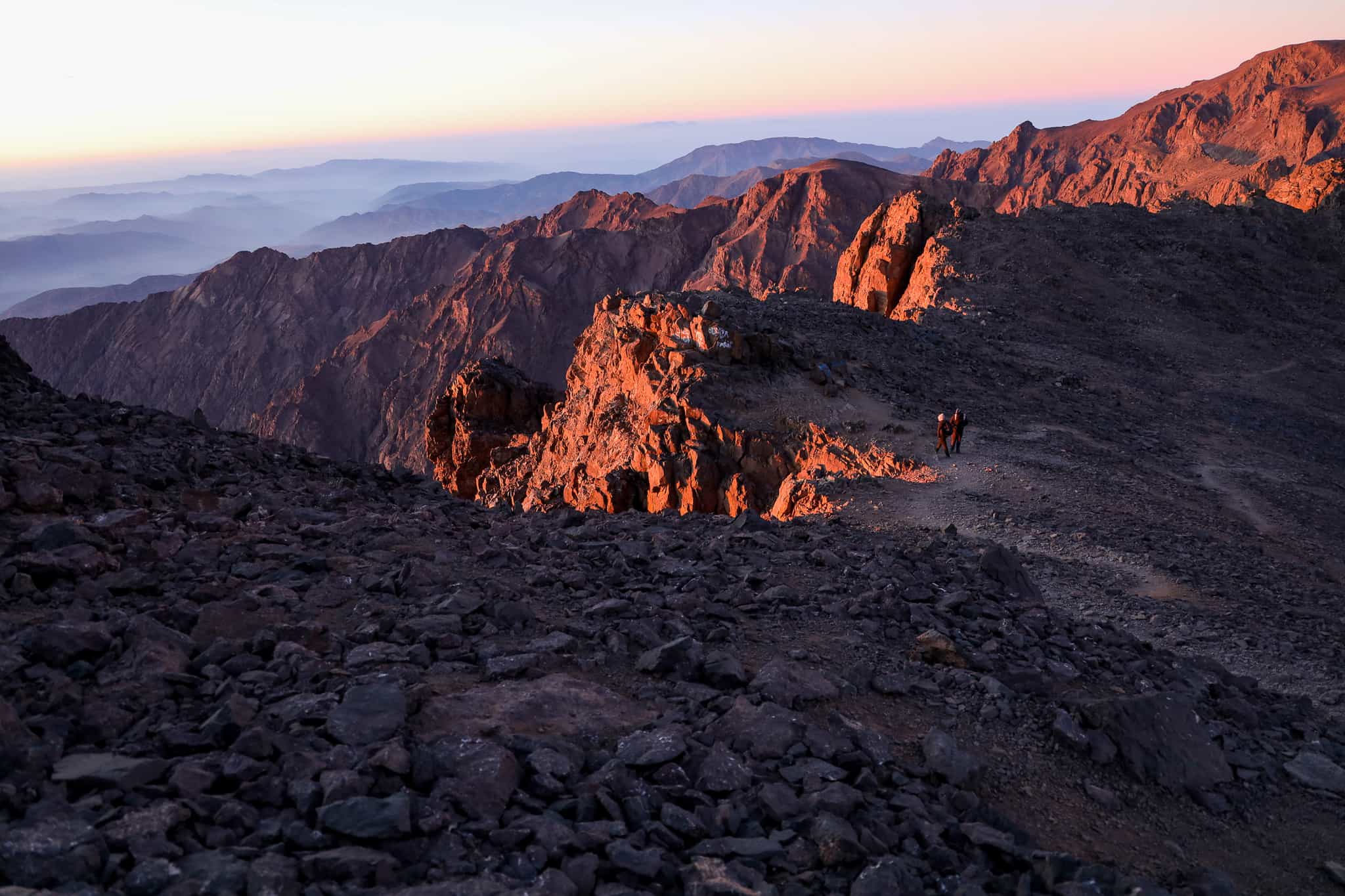
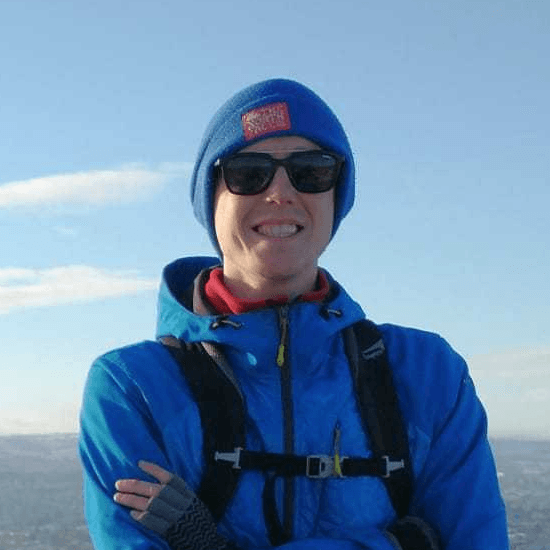
Need help finding flights?
From logistics and how to get there, to fitness, group dynamic and trip difficulty, Rory and his team of friendly experts are on hand to help.
We've got your back
Guaranteed to run
All Much Better Adventures trips are now guaranteed to run. Once you’ve booked your spot you can immediately make your travel arrangements, no uncertainty, no hanging about (excludes 'request to book' departures). Full details
Flexible payments
Secure your spot with the minimum deposit and pay off the remaining balance in as many instalments as you like, with no interest or fees. Full details
Happiness Guarantee
We’re so confident you’ll have an amazing time we’ll put our money on it. Full details
Full financial protection
To give you complete peace of mind Much Better Adventures is backed by ABTOT, ABTA and ATOL memberships. Full details
Tried & Trusted
Much Better Adventures is rated ‘Excellent’ on Trustpilot with over 1000 verified trip reviews averaging 4.8/5.
Connect before you go
You'll be invited to join a WhatsApp group to get to know each other before your big adventure together. Full details
DEPARTURE DATES
Tuesday 12th August 2025
to Saturday 23rd August 2025
Fully Booked





